How Fast Planes Fly (Takeoff, Cruising & Landing)
If you’re wondering how fast planes fly, the answer is that it ranges from 160 mph (260 km/h) to 2,400 mph (3,900 km/h) depending on the type of plane (commercial airliner, single-engine, private jet, military planes) and whether the plane is taking off, at cruising altitude or landing.
A plane’s speed depends on several factors: its classification, engine, weight at take-off time, and aerodynamics amongst many other things.
We’ll take the example of an average commercial plane during the three different phases of flying.
So let’s take a closer look at how the speed a plane flies compares depending on these two factors.
Table of Contents
- 1 How Fast Planes Fly to Take-off
- 2 How Fast Planes Cruise At
- 3 How Fast Planes Land
- 4 How Fast Fighter Jets Fly
- 5.1 Boeing 747
- 5.2 Boeing 737
- 5.3 Airbus A380
- 6.1 Single Engine
- 6.2 Private
- 7.1 Fastest Single Engine Plane
- 7.2 Fastest Commercial Plane
- 7.3 The Fastest Plane Ever
- 8 Why Planes Don’t Fly At Full Speed

How Fast Planes Fly to Take-off
During take-off, commercial aircraft speed varies anywhere between 260 km/h to 290 km/h or 160 mph to 180 mph.
Take-off speed depends mostly on factors like the aircraft’s weight.
How Fast Planes Cruise At
The usual cruising speed for a commercial airplane is between 880-926 km/h or 547-575 mph.
Most airplanes fly slower than the maximum speed they are capable of while at cruising altitude to conserve fuel.
How Fast Planes Land
Most commercial airliners land with a speed of between 240 and 265 km/h or 150 to 165 mph.
Landing speed depends on the weight of the plane , the runway surface, and the plane’s flap settings.
How Fast Fighter Jets Fly
There are several types of military aircraft, which means speeds can vary a lot.
Fighter jets, though, can fly faster than 1,195 km/h or 717 mph with some like the F15 flying at an astonishing speed of 3,100 km/h or 1,920 mph.
In contrast, cargo planes fly at an average speed of 640 km/h or 400 mph, which is noticeably slower than fighter jets.
How Fast Passenger Jets Fly
Let’s take a look at the speeds of a few of the most popular airliners used in commercial aviation.
A Boeing 747 has a take-off speed of 290 km/h or 180 mph, and it cruises at a speed of 900 km/h or 570 mph.
The Boeing 747’s landing speed varies on condition, but typically it’s within 265-280 km/h or 165-175 mph.
The Boeing 737 across all its variants has an average take-off speed of 250 km/h or 150 mph, and the cruise speed of its 737-800 variant is 842 km/h or 543 mph.
The Boeing 737’s landing speed is between 240- 260 km/h or 140-160 mph.
Airbus A380
Airbus A380s have a take-off speed that ranges from 275-310 km/h or 170-195 mph, and they have a cruising speed of 1,050 km/h or 630 mph at a height of 11 km/ 36,000 feet.
The Airbus A380’s landing speed is between 240-260 km/h or 150-161 mph.
How Fast Other Planes Fly
Single engine, private and military planes all have different speeds (no to mention significantly different costs to own ) compared to commercial airliners due to how they’re built.
Single Engine
Since most single-engine planes have propeller-based or piston engines, their airspeed is limited compared to other types of planes.
For example, the Cirrus Vision SF50 has a maximum cruise speed of 576 km/h or 358 mph.
Since private jets aren’t constrained by the operational logistics of a commercial airliner nor the cost-cutting policies of airlines, they can fly faster than most commercial planes.
The average private plane can cruise between 650-960 km/h or 400-600 mph. Some high-end private jets like the Gulfstream G700 can fly at speeds greater than 1,200 km/h or 740 mph.
Related: How Much Does a Private Jet Cost?
What is the Fastest Plane in the World?
Fastest single engine plane.
The Soviet Union’s Tu-114 has held the record for the fastest piston-engine plane since 1960.
It has a top speed of 870 km/h or 540 mph at a height of 7.9 km or 26,000 feet.
This plane was originally intended for military use, but they were later converted to be used as a luxury airliner.
Fastest Commercial Plane
The fastest commercial plane was the Concorde ; it could reach speeds higher than 2,100 km/h or 1,300 mph.
The only thing limiting the Concorde’s speed was temperature; excess heat generated by air friction threatened to melt the plane’s skin off, which is the outer surface which covers much of its wings and fuselage .
If you’re wondering how long it would take to fly around the world , the Concorde currently holds this record at 31 hours, 27 minutes and 49 seconds, which was set in 1995.
The Fastest Plane Ever
The fastest plane overall that was ever built is the Lockheed SR-71. Also known as the ‘black bird’, the SR-71 is a military plane that can fly over 3,900 km/h or 2,400 mph.
It also holds the world record for the highest altitude of flight by any aircraft at over 25km/ 85,000 feet.
Why Planes Don’t Fly At Full Speed
Commercial planes don’t fly at the maximum speeds they are capable of. Typically, the average commercial plane will cruise using only 75% of its total power. There are two main reasons for airliners to not have their planes use full power:
- Cost-Saving
Airlines conserve fuel by flying their planes at lower speeds, which also helps keep maintenance and operating costs lower.
More passengers also prefer cheaper tickets instead of slightly earlier arrival times, so there is no need to change things as it stands.
In any case, if planes flew at full speed regularly, they would only arrive 20 to 30 minutes earlier on average. Most consumers do not value arriving 30 minutes earlier over getting a cheaper ticket.
So it makes less sense to go at full speed from a practical perspective.
It just isn’t worth it for airlines to use full power when it costs more and customers don’t value it.
- Technical Problems
Flying at lower speeds also helps reduce maintenance-related damage to an aircraft because of less air resistance.
Flying at higher speeds also makes it harder for crew members to use onboard instruments.
Flying at higher speeds would require more power, especially because most engines are designed to operate most efficiently at lower speeds.
Overall, it just doesn’t make sense to fly at higher speeds from both a practical and technical perspective.
In conclusion, planes can fly very fast (up to 2,400 mph or 3,900 km/h if we’re talking about the fastest speed ever), but the exact speed of a plane is subject to its classification and the conditions it is operating under.
Naturally, planes fly fastest when cruising in the air.
Helen Krasner
Helen Krasner holds a PPL(A), with 15 years experience flying fixed-wing aircraft; a PPL(H), with 13 years experience flying helicopters; and a CPL(H), Helicopter Instructor Rating, with 12 years working as a helicopter instructor.
Helen is an accomplished aviation writer with 12 years of experience, having authored several books and published numerous articles while also serving as the Editor of the BWPA (British Women Pilots Association) newsletter, with her excellent work having been recognized with her nomination of the “Aviation Journalist of the Year” award.
Helen has won the “Dawn to Dusk” International Flying Competition, along with the best all-female competitors, three times with her copilot.
Related Posts:
- Metals & Electronics ›
- Aerospace & Defense Manufacturing
Industry-specific and extensively researched technical data (partially from exclusive partnerships). A paid subscription is required for full access.
List of most popular commercial airlners by cruising speed
Cruising speeds of the most common types of commercial airliners (in knots).
- Immediate access to 1m+ statistics
- Incl. source references
- Download as PNG, PDF, XLS, PPT
Additional Information
Show sources information Show publisher information Use Ask Statista Research Service
September 2016
2012 to 2016
This data displays the average cruising speed of the most commonly used airliners in the world. Where data for multiple models within a family exists, the average cruising speed is given. Data on the cruising speed of the Embraer ERJ 145 Family was not available and therefore it does not appear on this chart. * Average combined cruising speed of Boeing-777 models 200ER, 200LR, 300, and 300ER. ** Cruising speed of a Boeing 737-400. *** Average combined cruising speed of Embraer models E170, E175, E175-E2, E190, E190-E2, E195, and E195-E2. **** Average combined cruising speed of Airbus A340 models 200, 300, 500, and 600. ***** Average combined cruising speed of Boeing 737 models 600, 700C, 700ER, 800, and 900ER. ****** Average combined cruising speed of Bombardier CRJ models 100, 200, 440, 700, 705, 900, and 1000. ******* Average combined cruising speed of ATR 72 models 200, 210, and 600.
Other statistics on the topic
Global air traffic - annual growth of passenger demand 2006-2023
Industrial Machinery Manufacturing
General Electric: revenue by segment 2022
Air cargo traffic - worldwide volume 2004-2023
Rolls-Royce: underlying revenue by segment 2022
To download this statistic in XLS format you need a Statista Account
To download this statistic in PNG format you need a Statista Account
To download this statistic in PDF format you need a Statista Account
To download this statistic in PPT format you need a Statista Account
As a Premium user you get access to the detailed source references and background information about this statistic.
As a Premium user you get access to background information and details about the release of this statistic.
As soon as this statistic is updated, you will immediately be notified via e-mail.
… to incorporate the statistic into your presentation at any time.
You need at least a Starter Account to use this feature.
- Immediate access to statistics, forecasts & reports
- Usage and publication rights
- Download in various formats
You only have access to basic statistics. This statistic is not included in your account.
- Instant access to 1m statistics
- Download in XLS, PDF & PNG format
- Detailed references
Business Solutions including all features.
Other statistics that may interest you
- Aircraft deliveries by manufacturer - global aircraft fleet 1999-2021
- List of military aircraft with cruising speeds in excess of 1,000 knots
- Aircraft manufacturers - key figures 2021
- Narrowbody jets in global aircraft fleet 2022-2032
- Business jet deliveries by manufacturer - global aircraft fleet 2020
- Number of business jets in APAC 2020, by OEM
- Number of business jets APAC 2020, by size
- Global commercial fleet - regional aircraft deliveries by manufacturers 2020
- Global commercial fleet - regional aircraft deliveries by region 2017-2019
- List of military helicopters with cruising speeds in excess of 155 knots
- Total consolidated fleet of KLM Royal Dutch Airlines 2021, by type of airplane
- Air France-KLM fleet by aircraft type 2022
- Commercial aircraft with in-flight connectivity access worldwide 2016-2030
- Global market size: in-flight connectivity services 2012-2029
- Wi-Fi availability on airlines globally by available seat miles 2017
- Wi-Fi availability on airlines globally by region 2016
- Types of Wi-Fi connectivity at airports worldwide 2016-2019
- Airbus - order backlog by region in 2006-2016
- Global commercial aircraft deliveries of leading regional airlines 2020
- Leading airports in Germany in September 2020, based on departures
- Size of business jet fleet in Singapore 2017-2022
- Size of the business jet fleet in Malaysia 2017-2022
- Total business jet fleet APAC 2019, by OEM
- Total business jet fleet in Indonesia 2017-2022
- COVID-19: opinion of French tourism professionals on plane travel 2020
- Aircraft fleet in the Middle East - OEM share 2021
- Number of Alitalia aircraft 2017, by model
- Argentina - airline flown most frequently 2018
- Brazil - airline flown most frequently 2018
- U.S. airport enplanements by state and air carrier category 2018
- UK: aerospace sector's output for 2010-2020
- Seat capacity of low cost carriers worldwide 2008-2017
- Airbus and Boeing aircraft with in-flight entertainment and connectivity (IFEC) 2017
- Revenue of the global leading aerospace and defense manufacturers 2022
- Passenger traffic at London Heathrow Airport by region 2021
- Aircraft fleet of Southwest Airlines 2011-2021
- El Dorado International Airport: monthly passenger traffic 2019-2021
- Hartsfield–Jackson Atlanta International Airport - operating expenses 2015-2021
- Hartsfield–Jackson Atlanta Airport - non-aeronautical revenue per passenger 2013-2021
- Types of government aid to airlines due to COVID-19 as of September 2021
Other statistics that may interest you Statistics on
About the industry
- Premium Statistic Aircraft deliveries by manufacturer - global aircraft fleet 1999-2021
- Premium Statistic List of military aircraft with cruising speeds in excess of 1,000 knots
- Premium Statistic Aircraft manufacturers - key figures 2021
- Basic Statistic Narrowbody jets in global aircraft fleet 2022-2032
- Premium Statistic Business jet deliveries by manufacturer - global aircraft fleet 2020
- Premium Statistic Number of business jets in APAC 2020, by OEM
- Premium Statistic Number of business jets APAC 2020, by size
- Premium Statistic Global commercial fleet - regional aircraft deliveries by manufacturers 2020
- Premium Statistic Global commercial fleet - regional aircraft deliveries by region 2017-2019
- Premium Statistic List of military helicopters with cruising speeds in excess of 155 knots
About the region
- Premium Statistic Total consolidated fleet of KLM Royal Dutch Airlines 2021, by type of airplane
- Premium Statistic Air France-KLM fleet by aircraft type 2022
- Premium Statistic Commercial aircraft with in-flight connectivity access worldwide 2016-2030
- Premium Statistic Global market size: in-flight connectivity services 2012-2029
- Premium Statistic Wi-Fi availability on airlines globally by available seat miles 2017
- Premium Statistic Wi-Fi availability on airlines globally by region 2016
- Premium Statistic Types of Wi-Fi connectivity at airports worldwide 2016-2019
- Premium Statistic Airbus - order backlog by region in 2006-2016
- Premium Statistic Global commercial aircraft deliveries of leading regional airlines 2020
- Premium Statistic Leading airports in Germany in September 2020, based on departures
Other regions
- Premium Statistic Size of business jet fleet in Singapore 2017-2022
- Premium Statistic Size of the business jet fleet in Malaysia 2017-2022
- Premium Statistic Total business jet fleet APAC 2019, by OEM
- Premium Statistic Total business jet fleet in Indonesia 2017-2022
- Premium Statistic COVID-19: opinion of French tourism professionals on plane travel 2020
- Premium Statistic Aircraft fleet in the Middle East - OEM share 2021
- Premium Statistic Number of Alitalia aircraft 2017, by model
- Premium Statistic Argentina - airline flown most frequently 2018
- Premium Statistic Brazil - airline flown most frequently 2018
- Basic Statistic U.S. airport enplanements by state and air carrier category 2018
Related statistics
- Premium Statistic UK: aerospace sector's output for 2010-2020
- Premium Statistic Seat capacity of low cost carriers worldwide 2008-2017
- Premium Statistic Airbus and Boeing aircraft with in-flight entertainment and connectivity (IFEC) 2017
- Premium Statistic Revenue of the global leading aerospace and defense manufacturers 2022
- Basic Statistic Passenger traffic at London Heathrow Airport by region 2021
- Premium Statistic Aircraft fleet of Southwest Airlines 2011-2021
- Premium Statistic El Dorado International Airport: monthly passenger traffic 2019-2021
- Premium Statistic Hartsfield–Jackson Atlanta International Airport - operating expenses 2015-2021
- Premium Statistic Hartsfield–Jackson Atlanta Airport - non-aeronautical revenue per passenger 2013-2021
- Premium Statistic Types of government aid to airlines due to COVID-19 as of September 2021
Further related statistics
- Premium Statistic Number of passenger aircraft of China Southern Airlines 2011-2021, by manufacturer
- Basic Statistic U.S. airports - public & private 2011
- Premium Statistic Business class air fares used by corporate clients - growth forecast 2011-2012
- Basic Statistic U.S. airline industry - transport related revenues
Further Content: You might find this interesting as well
- Number of passenger aircraft of China Southern Airlines 2011-2021, by manufacturer
- U.S. airports - public & private 2011
- Business class air fares used by corporate clients - growth forecast 2011-2012
- U.S. airline industry - transport related revenues

Russian-operated L-39 attack aircraft crashes in Mali: video
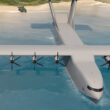
Pentagon selects Aurora Flight Sciences to develop large new generation seaplane
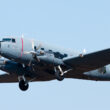
South African Air Force to retire C-47 Dakota fleet after 80 years of service

1969: How three aeronautical milestones in one year changed how we travel by air
- ZeroAvia hydrogen-powered aircraft
- zero-emissions
- Zero emission
- Yeti Airlines
- Aviation Technology and Innovation
- This is interesting!
How fast do planes fly? Exploring airplane speeds
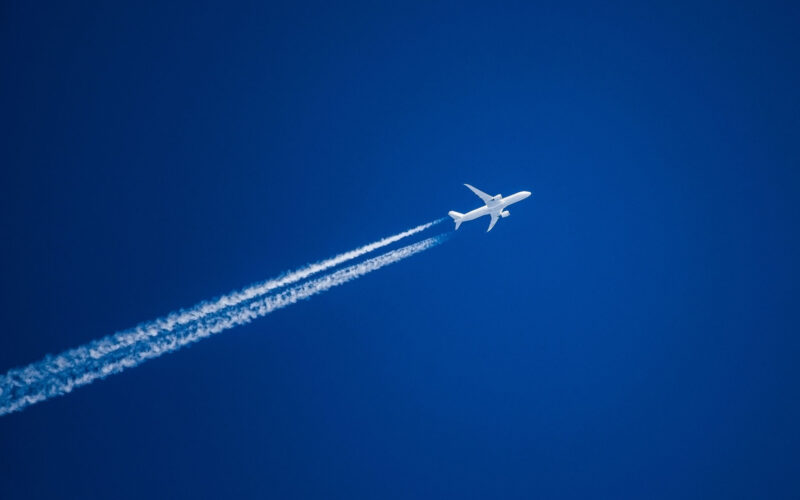
It goes without saying that planes are seriously fast, but they can fly at a whole range of different speeds depending on the type of aircraft , altitude, weather conditions, and other factors. Aviation speed is typically measured in miles per hour (mph) – or a Mach number, which is a measurement of speed relative to the speed of sound.
Let’s explore how fast planes fly by focusing on commercial, military, and private jet speeds.
Different types of aircraft speed measurement
There are two main categories: ground speed and airspeed . Ground speed refers to the aircraft’s speed relative to the ground below. Airspeed is the more commonly used measurement in aviation and is usually measured in knots (kt), with one knot equivalent to 1.15 mph. This measurement considers the aircraft’s speed relative to the surrounding air, which is essential for safe and efficient flight.
The two most common types of airspeed are indicated airspeed (IAS) and true airspeed (TAS). Indicated airspeed is the speed shown on the aircraft’s instrument panel and is based on the pressure differential between the pitot tube and static port on the airplane. However, due to a variety of factors such as instrument errors and atmospheric conditions, indicated airspeed may not always be an accurate representation of the aircraft’s true airspeed.
Therefore, true airspeed is the actual speed of the aircraft relative to the surrounding air, independent of instrument errors or other factors. It is calculated by adjusting the indicated airspeed for temperature and altitude and is usually measured in kt or mph.
Plane speeds
Mach and mph are two different units of measurement for speed. Mph is a unit of measurement commonly used for ground vehicles and aircraft, and it measures the distance an object travels within an hour. Mach number is a unit of measurement that compares the speed of an object to the speed of sound.
The speed of sound, which is referred to as Mach 1, is approximately 767 mph (at sea level and at a temperature of 68 degrees Fahrenheit). Therefore, Mach 0.85, which is the typical cruising speed of commercial airliners, means that the aircraft is traveling at 85% of the speed of sound, or approximately 646 mph at sea level.
In comparison, the fastest human running speed ever recorded is approximately 28 mph – and needless to say, that’s significantly slower than the cruising speed of a commercial airliner. Even the slowest commercial airliner takeoff and landing speeds are much faster than the fastest recorded human running speed.
Specifically, the cruising speed of commercial airliners is typically around 550-600 mph, or Mach 0.85. Takeoff and landing speeds are much slower, typically between 130-180 mph, depending on the aircraft and weather conditions. The landing speed of a commercial airliner can be around 160-180 mph, while the takeoff speed can be around 130-160 mph.
The fastest passenger planes
The Airbus A350-1000 first entered service in 2018 and has a top speed of Mach 0.89, which means it can travel at approximately 683 mph at sea level. This makes it the fastest commercial plane currently in operation. The A350-1000 is also known for its fuel efficiency and advanced technology, making it a popular choice among airlines.
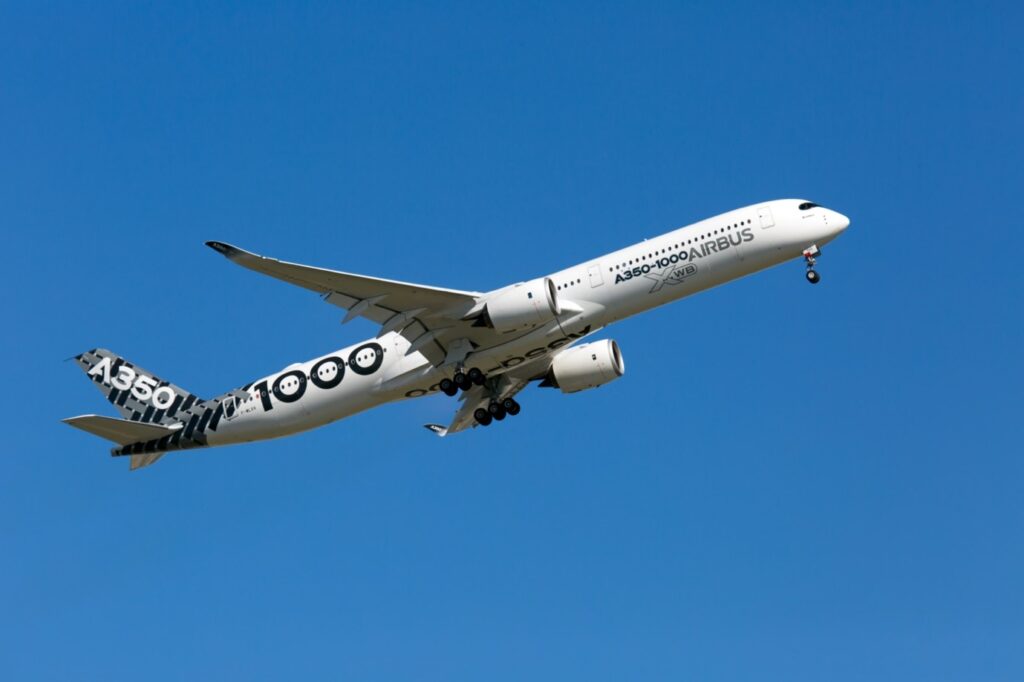
Another leading commercial airliner is the Boeing 747-8, which has been in service since 2011. It has a top speed of Mach 0.86, so it can travel at approximately 660 mph at sea level. The 747-8 is the latest variant of the Boeing 747, which has been a popular aircraft for over 50 years. The 747-8 is known for its large size and range, making it ideal for long-haul flights.
The fastest civilian aircraft ever built is the retired Concorde supersonic jet. Supersonic refers to speeds that surpass Mach 1 – the speed of sound. The Concorde was a joint venture between British Aerospace and the French company Aerospatiale. It entered service in 1976 and was retired in 2003. The Concorde could fly at speeds of up to Mach 2.04, or just over 1,565 mph. As such, it could travel from London to New York in just over three hours, compared to the average seven-hour flight time for other commercial airliners.
Despite its impressive speed, the Concorde was ultimately retired due to factors including high operating costs, environmental concerns and safety issues.
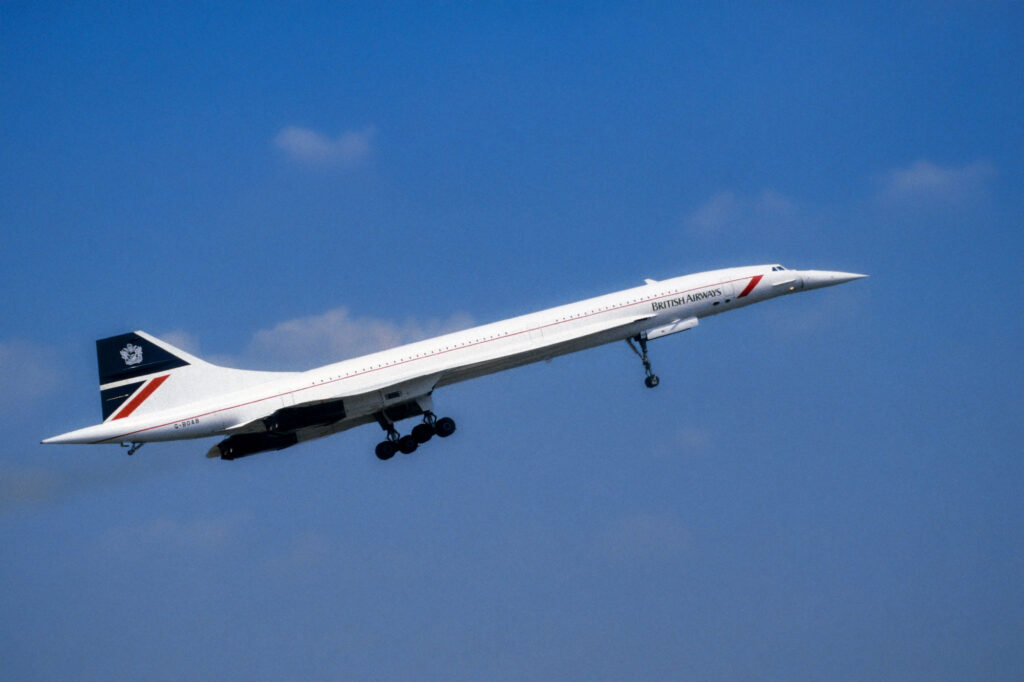
The fastest military aircraft
The Lockheed SR-71 Blackbird is a reconnaissance aircraft that was developed by Lockheed Martin for the United States Air Force. It first entered service in 1966 and was retired in 1998. The Blackbird is known for its impressive speed, altitude, and ability to evade detection. It has a top speed of Mach 3.3, which means it can fly at over 2,512 mph, and a maximum altitude of 85,000 feet.
The Blackbird was designed to conduct reconnaissance missions over hostile territory, and its high-speed and altitude capabilities allowed it to avoid enemy radar and surface-to-air missiles. Despite its performance, the Blackbird was retired due to high operating costs and the development of new reconnaissance technologies.
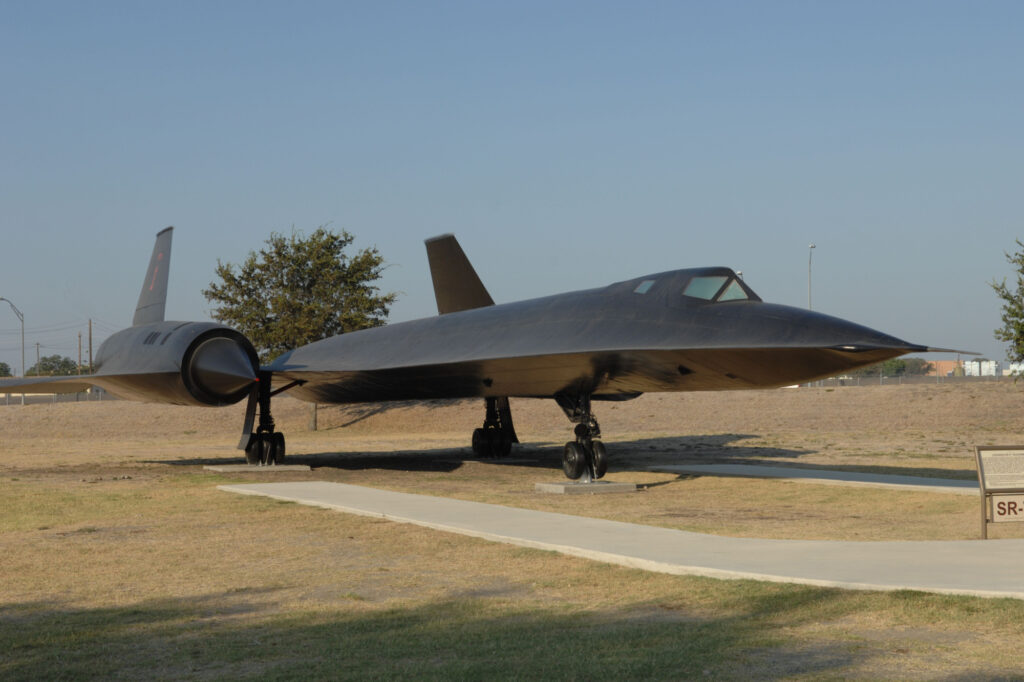
The Russian MiG-25 , also known as the Foxbat, is a supersonic interceptor and reconnaissance aircraft that first entered service in 1970. It has a top speed of Mach 2.83, or over 2,154 mph, and a maximum altitude of more than 80,000 feet.
The MiG-25 was designed to intercept and destroy enemy aircraft at high speeds and altitudes. It was also capable of conducting reconnaissance missions over hostile territory. Used extensively by the Soviet Union and several other countries, only two units remain in service with the Syrian Air Force .
In addition to the SR-71 Blackbird and the MiG-25, there are many other military aircraft that are capable of flying at supersonic speeds. These include the F-15 Eagle , the F-16 Fighting Falcon , the Su-27 Flanker , the Eurofighter Typhoon, the Tu-160 Blackjack, the Antonov An-22, and the Rockwell B-1 Lancer. These aircraft are designed for a variety of missions, including air-to-air combat, ground attack, and reconnaissance.
Though the supersonic flight is an impressive technological feat, it is important to note that it comes burdened with several challenges, from high fuel consumption and environmental concerns such as sonic booms.
The fastest private jets
The Gulfstream G700 has a maximum cruising speed of Mach 0.925, or approximately 710 mph. It can fly nonstop for more than 7,000 nautical miles (12,964 km), making it a popular choice for long-range business travel.
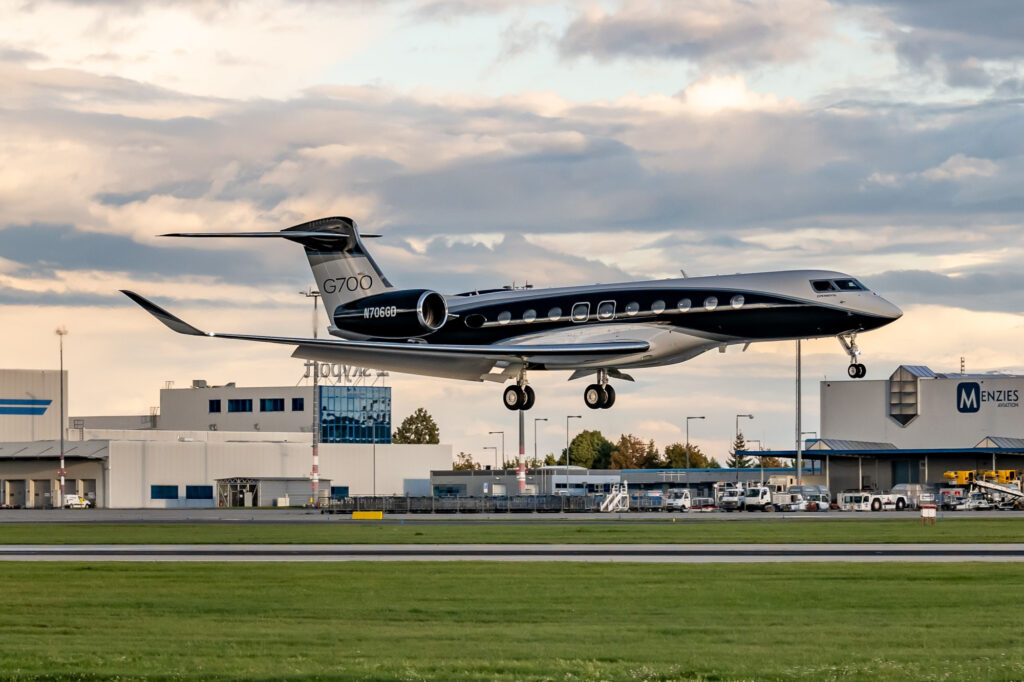
Another very fast private jet is the Cessna Citation X + , with a maximum cruising speed of Mach 0.935 or roughly 717 mph. It can fly up to 3,460 nautical miles (6,408 km) and is used for short to medium-range business travel.
The fastest private jet currently available is the Bombardier Global 8000 which has a maximum cruising speed of Mach 0.94 . This long-range jet can fly up to 7,900 nautical miles (14,631 km) non-stop, making it one of the most capable business jets on the market.
However, it is worth noting that the top speed of private jets can vary depending on various factors, such as altitude, temperature, weight, and even humidity. While private jets are typically designed to reach high speeds, the actual speed during a flight may be lower than the maximum speed possible, due to various factors such as air traffic control restrictions, turbulence, and weather conditions.

The SR-71 Blackbird: unveiling the fastest plane ever built
- Aviation History
- commercial aviation
- SR-71 Blackbird
Sign Up for Our Newsletters
Related posts.
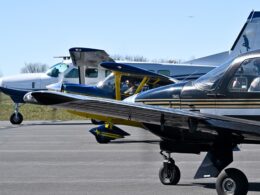
DC Flyover: the 58 aircraft from aviation’s past set to dazzle Washington crowds
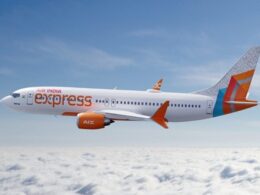
Air India Express welcomes first two Boeing 737 MAX 8 jets from PIF-owned lessor
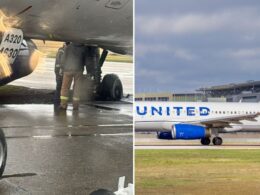
United Airlines A320 wheel gets stuck in muddy grass at Edmonton airport: video
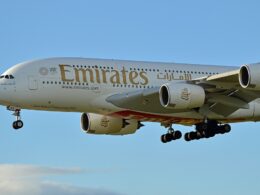
Emirates Airbus A380 stored during pandemic takes off on reintroduction flight
Stay updated on aviation and aerospace - subscribe to our newsletter!
Simple Flying
How fast does an airplane go in the different stages of a flight.
From take-off to touchdown, we look at all the speeds in between.
- Pilots aim for an efficient "sweet spot" for aircraft speed to conserve fuel.
- The Airbus A380 can go over 1,000 km (670 miles) per hour.
- Commercial aircraft land at 275-290 km (160-180 miles) per hour.
As we buckle our seatbelts and settle in for our flight to somewhere magical, it may sometimes pass our minds how fast the aircraft is rattling down the runway and what our cruising speed might be as we tuck into our in-flight film and meals. Today, we will break it down and understand how fast various aircraft types can travel in the air and on the ground. First, it's essential to know that the altitude at which an aircraft will aim to travel can depend on everyone's overall weight, the cargo onboard, weather conditions, and the aircraft itself.
It's not always the faster, the better. Pilots usually aim for the 'sweet spot,' where the aircraft speed allows it to travel efficiently without burning too much fuel.
When comparing how fast you drive your car, it will differ vastly from most aircraft in flight, given that the Airbus A380 can reach over 1,000 kilometers (670 miles) per hour. This is more than three times faster than Formula 1. However, to understand how fast your next flight might be, let's look at all the variables.
5 Stunning Airports Where You'll Need Your Camera For Takeoff
Taxi, takeoff, cruising, descent and landing.
This is the process of the aircraft moving from the gate to the runway. It is usually at a speed of between 30 and 35 kilometers (18 and 22 miles), so the aircraft can stop quickly in an emergency and also not risk wheel damage when turning sharply.
Fun fact: The term 'taxi' can be dated as far back as the early 1900s, and aviation commentators suggest that it came from observations that the plane would move slowly to the runway, similar to how taxis go around the block looking for passengers.
Takeoff is the instance where the aircraft leaves the ground and becomes airborne .
Depending on the size of the aircraft will depend on how much thrust and speed is adopted. For smaller, light-wing aircraft, full force is predominantly used. However, larger commercial aircraft may use reduced power for several reasons, including prolonging engine life and limiting noise. A typical jet's average takeoff speed is between 240 to 285 kilometers (149 - 177 miles) per hour, compared to a Cessna 150; these can take off when hitting the 100 kilometers (62 miles) per hour mark.
Aircraft designed for high-speed operations, including jetliners, frequently have difficulty providing enough lift during takeoff. This is why we see several lifting devices on modern aircraft, including slats and flaps. These increase the aircraft camber, which results in more lift and is effective at low speeds.
Please get the latest aviation news straight to your inbox: Sign up for our newsletters today.
This is the phase of flight where the aircraft has leveled off after its ascent and before commencing its descent into landing. Cruising is most of the flight; for many passengers, it's when they tuck into a good book, movie, or sleep. The most common of aircraft, such as the Airbus A320 and Boeing 737, mainly cruise at a comfortable 830 kilometers (515) miles per hour, or if you compare it to the Airbus A350 or Boeing 787, it can reach a slightly higher speed of 900 kilometers (559 miles) per hour. The typical cruising altitude for most commercial flights sits between 31,000 and 38,000 feet.
Different aircraft have different max speeds, and as published by the Netherlands' busiest airport, Schiphol.nl , has listed several of the most famous aircraft that 'cruise' their way to AMS. Let's see what they have to say:
This is the part of your flight when the aircraft has left its cruising altitude and is descending towards its destination. This is commonly when you are asked to return your tray table to the upright position, cabin crew passes through collecting those last few things throughout the cabin, and you open your window shade to check out the landscape below. Commercial aircraft usually descend at 1,500 to 3,000 ft per minute. At the final points of descent, aircraft will slow to a similar speed as they land , as noted in the next portion below.
Why Aircraft Vibrate More During Takeoff
Just the same as it is for a bird, an aircraft landing is the point where they return to the ground. For planes, they will land at a faster speed than when they took off, for obvious reasons, given they have not left from a stationary point in the sky. The landing speed can vary, depending on what sort of surface they plan to land on, while for larger commercial aircraft, it will usually always be on the apron; for smaller aircraft, this could be gravel, grass, or even the beach .
When looking at larger jetliners, the pilot will adjust the aircraft accordingly with speed and altitude to ensure a comfortable approach and touchdown. The most common speed aircraft travel at this point is around 275 to 290 kilometers (160 to 180 miles) per hour.
Airplane Cruise – Balanced Forces

Four Forces
There are four forces that act on an aircraft in flight: lift, weight, thrust, and drag. A force is a vector quantity which means that it has both a magnitude (size) and a direction associated with it. If the size and direction of the forces acting on an object are exactly balanced, then there is no net force acting on the object and the object is said to be in equilibrium. From Newton’s first law of motion, we know that an object at rest will stay at rest, and an object in motion (constant velocity) will stay in motion unless acted on by an external force. If there is no net external force, the object will maintain a constant velocity.
Cruise Velocity
In an ideal situation, the forces acting on an aircraft in flight can produce no net external force. In this situation the lift is equal to the weight, and the thrust is equal to the drag. The closest example of this condition is a cruising airliner. While the weight decreases due to fuel burned, the change is very small relative to the total aircraft weight. The aircraft maintains a constant airspeed called the cruise velocity .
Relative Velocity
If we take into account the relative velocity of the wind, we can determine the ground speed of a cruising aircraft. The ground speed is equal to the airspeed plus the wind speed using vector addition. The motion of the aircraft is a pure translation. With a constant ground speed, it is relatively easy to determine the aircraft range, the distance the airplane can fly with a given load of fuel.
If the pilot changes the throttle setting, or increases the wing angle of attack, the forces become unbalanced. The aircraft will move in the direction of the greater force, and we can compute acceleration of the aircraft from Newton’s second law of motion .
Thanks for contacting us! We will get in touch with you shortly.

How Fast Do Airplanes Fly? Climb, Cruise & Descent
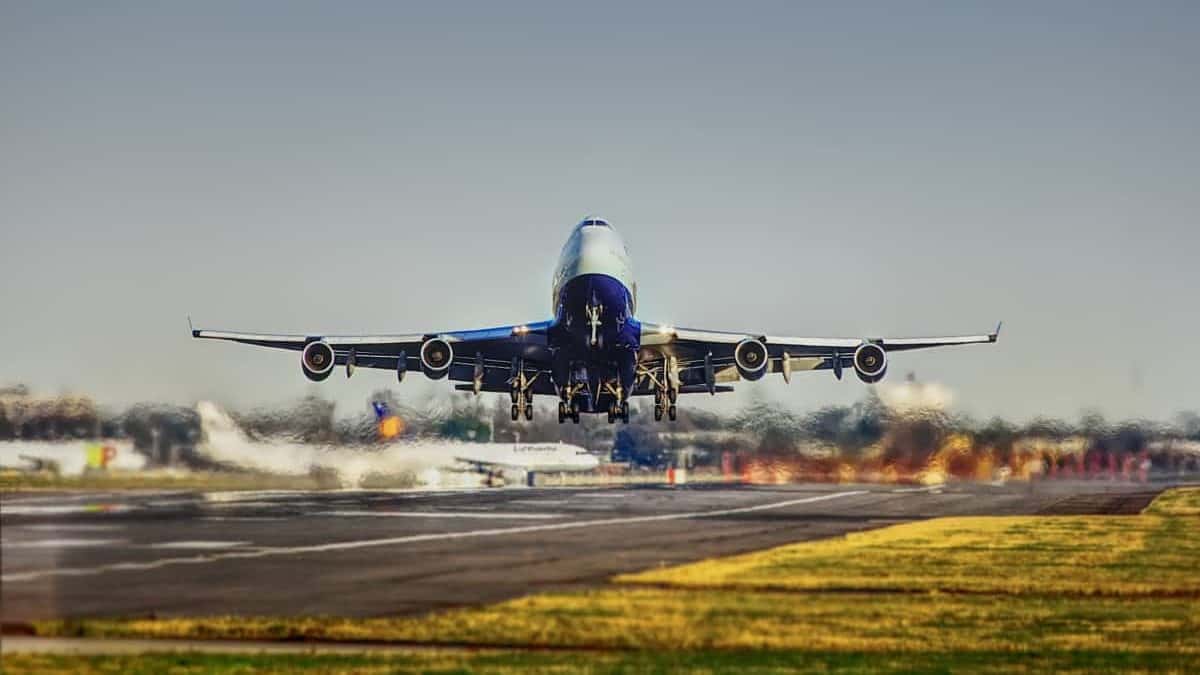
Flying for any amount of time can soon get boring so the faster it takes the better. Have you ever wondered if pilots fly planes at their maximum speed or are they limited like we are driving a car down the highway? We all know airplanes are fast, the question is though, just how fast?
At takeoff, most passenger jets are traveling around 150-180knots/170-210mph. They will then climb at a maximum speed of 250kts/290mph while under 10,000 feet and then can speed up to 280-300kts/320-345mph for the rest of the climb. Cruise speeds of most passenger jets are around 600kts/700mph.
To find out all about the different speeds an airplane flies at please read on…
Large Commercial Aircraft Speeds:
What is an airplane’s speed at takeoff .
Most commercial airliners use three different speeds for takeoff. These are: V1 , VRotate and V2 . For the Boeing 737-8 or the Airbus A320 family, these speeds are in the region of between 125knots (143mph) to 175knots (200mph).
The V1 or Decision Speed is the speed pilots calculate to know what is the maximum speed they can reject the takeoff. This speed depends on the weight of the aircraft, humidity, outside air temperature, weather, condition of the runway, length of the runway etc.
V1 speed is usually around 140knots +/- 5 knots (Around 160mph)
The Vr or VRotate Speed is the calculated speed at which the pilot flying (One pilot manipulates the controls while the other monitors the instrumentation) pulls back on the yoke or stick to lift the aircraft off the ground. Vr Speed is always equal to or higher than V1, but it can not be lower.
Vr Speed is usually also around 140knots +/- 5 knots (Around 160mph)
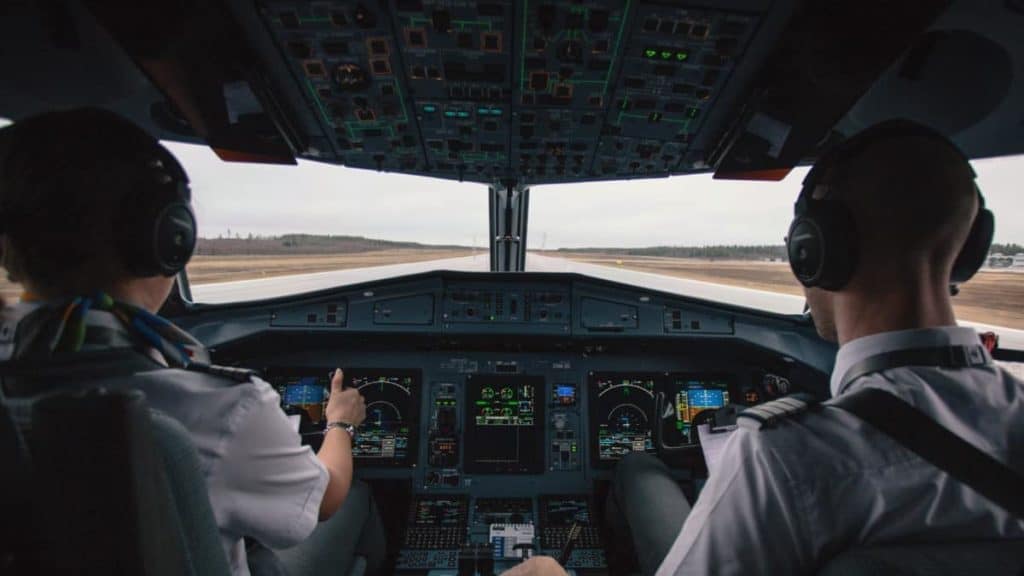
V2 Speed:
The V2 Speed is the speed of the aircraft at 50 feet above the ground. This is the speed the aircraft uses to climb to at least 400 feet above the runway and it’s always 5 knots greater than the Vr speed. In case of an engine failure on takeoff the V2 speed will keep the aircraft safe and on a shallow climb while still avoiding obstacles.
V2 speed is usually also around 145knots +5/-0 knots (Around 166mph)
What is an Airplane’s Speed During the Climb?
The speed of an airplane during its climb varies greatly with the wind and the weight of the aircraft, but all aircraft must abide by maximum airspeed limitations set forth by the world’s aviation governing bodies.
From liftoff up to 10,000 feet above Mean Sea Level (MSL), all pilots must NOT fly their airplane faster than 250knots or 288mph, unless they request to do so with air traffic control. This speed limit is to help air traffic controllers control the flow of aircraft into and out of airports below.
This slower speed also allows for more power to climb faster allowing the airplane to quickly climb through the busy airspace surrounding each airport. Above 10,000 feet the pilots are allowed to speed up so their speed usually increases to 280-300knots, but in doing so their rate of climb will reduce.
Once passing around 24,000 feet MSL pilots will then speed up again to around 350-430knots (400-500mph). This slows the rate of climb again but improves the time taken to complete the flight. This configuration allows for a steady climb up to cruising altitude while flying at a fast enough speed to ensure the passengers get to their destination in a reasonable time.
The faster an airplane flies, the slower it climbs. Engines can only supply a set amount of power so pilots have to select which flight regime they take.
Think of it like towing a trailer with a truck. On the flat road section, you can flatten the accelerator and your truck max’s out at 100mph. You then come to a hill and still with your foot to the floor your truck can now only climb at 80mph while towing. This is the same with the airplane.
Learn More … Try These Articles: * How Much Do Airplanes Weigh? (With 20 Examples) * This Is Why Pilots Reduce Thrust After Takeoff?
What is an Airplanes Cruise Speed?
The speed of a typical airliner in cruise is usually up to 600kts/700mph/960kph. In the cruise, the pilots use the airplane’s Mach Number for controlling its speed as this number is not affected by atmospheric pressure at cruise altitudes.
What is the Mach Number?
It’s basically the speed of the aircraft expressed as a percentage of the speed of sound (666 knots/766mph/1233kph). Controlling an aircraft by the Indicated Airspeed(IAS) at high altitudes is not efficient because the IAS is decreasing with increasing altitude and is also dangerous for speed control since the aircraft might find itself in an overspeed or underspeed condition.
As you can see in this picture, in the left top corner of the right-hand screen, .77 is the selected Mach Number which results in a 244knots IAS.
The Ground Speed on the other hand, as seen on left-hand screen, top left corner is well over 410knots or 500mph/900kph.
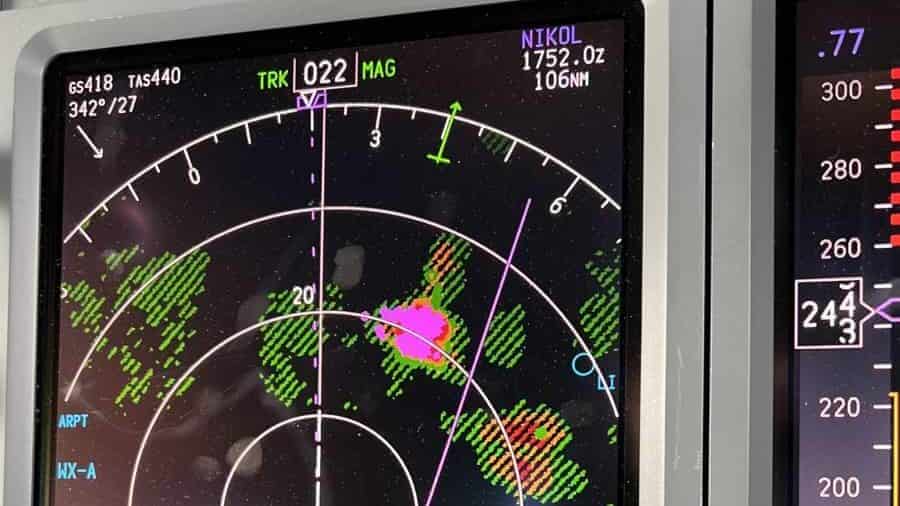
Think of speeds like this:
- Ground Speed is the speed the airplane’s shadow is moving over the ground
- Indicated airspeed is the speed of the airflow hitting the nose of the aircraft
The arrow in the top left corner is showing the wind outside. In relation to the aircraft, the wind is blowing from the pilots’ 10 o’clock position at about 27knots. This makes the airplane fly slower because it is a headwind.
If the wind was blowing from behind the aircraft this is known as a tailwind and will give the airplane a push resulting in a faster speed over the ground for the same indicated airspeed.
Usual cruise speeds are in the region between 400kts/450mph to 560kts/650mph and it is greatly affected by the wind.
The stronger the tailwind, the faster the airplane moves over the ground, the stronger the headwind the slower the airplane moves over the ground for the same indicated airspeed.

Join My Newsletter & Get Great Tips, Information and Experiences To Help You Become a Superb Pilot!
- Wanting To Become A Pilot
- Student Pilot
- Aready A Pilot
- Aviation Enthusiast
- Money Saving Course
What is an Airplane’s Speed During Descent?
The speed on the descent is somewhat like the climb speed. Initially, the aircraft descends from its cruising altitude by the pilots changing its Mach number. The slower the speed, the less lift the wings produce and gravity does the rest.
Once the airplane passes through 29,000 feet the pilots start using the Indicated Airspeed again.
Ground Speeds during the descent usually vary between 345kts/400mph to 435kts/500mph depending on if the airplane has a headwind or a tailwind.
Passing through 10,000 feet MSL, the same Air Traffic Control restrictions apply as the climb, so the pilots have to slow down to a maximum of 250knots (300mph). Ground speeds again vary between 300mph to 400mph depending on the wind.
What is an Airplane’s Speed at Landing?
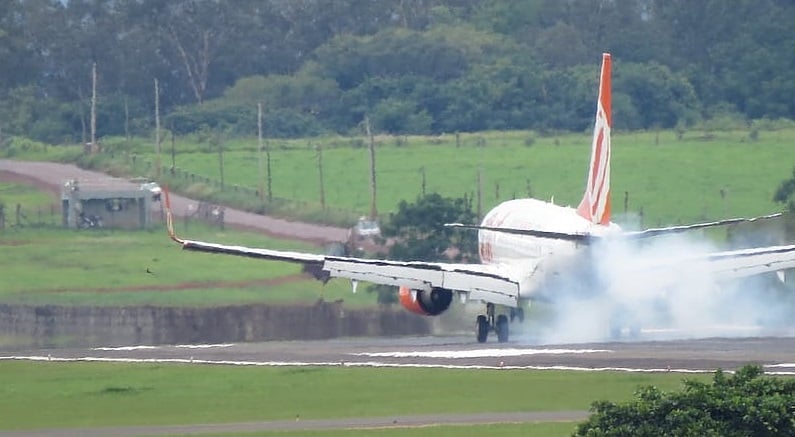
The landing speed of a commercial airliner is greatly affected by the actual weight of the aircraft. The higher the weight, the higher the speed needed. More lift is required for the heavier load. To get more lift the airplane needs to be flying faster.
The typical speed region at landing for a large airliner is usually 120kts/140mph to 155kts/180mph.
What is an Airplane’s Speed During Taxiing?
Since we are talking about speeds in flight it would be appropriate to at least mention the speed of aircraft on the ground. Aircraft inside the apron usually taxi with 10 mph maximum. Outside of the apron, this speed is increased to a maximum 30 mph.
The apron is the area immediately surrounding the terminal gates and where ground personnel are scurrying back and forth servicing the waiting aircraft. Once the airplane gets out onto the less busy taxiways the pilots can then speed up.
Light Aircraft Speeds:
Although the skies are dominated by the ‘Heavy Iron’, there is a tonne of light aircraft flying around and they too have certain speeds the pilots have to maintain to ensure a safe flight.
Light aircraft like the Cessna 172 or the Diamond DA40 only use one speed – The Indicated airspeed. They do not have the need for V1, Vr, or V2 like large commercial aircraft do, simply because they only have one engine, plus they are not going that fast.
What is a Light Airplane’s Speed at Takeoff?
The takeoff speed for light aircraft can be as low as 45mph. One of the biggest things affecting the takeoff speed of a light aircraft is the size of the wings (wing span) and the engine power. Both can significantly decrease the takeoff speed.
Large wings produce lots of lift meaning the aircraft needs less airflow over them to get airborne. Powerful engines mean they can accelerate the plane to lift off speed in a much shorter distance.
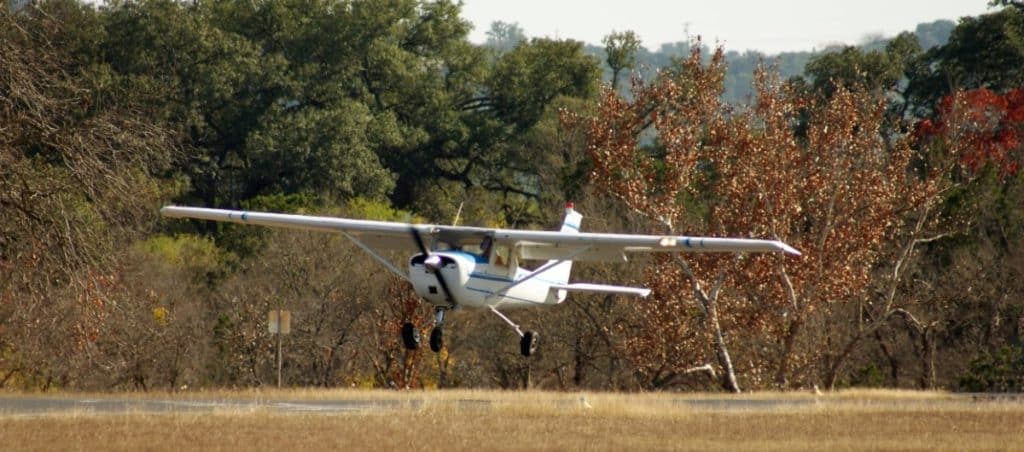
Typically most small aircraft lift off around 60mph. This gives a good buffer between the power it can produce and its stall speed.
The stall speed is the airspeed at which there is not enough air flowing over the wings to lift the aircraft into the air. An aircraft stalling close to the ground usually ends in a wreckage of the aircraft.
What is a Light Airplane’s Speed During Cruise?
Cruise speeds for most light aircraft vary between 70mph to 120mph. The Cessna 172 has a cruising speed of 110knots (125mph). If you have ever flown in one you would know that it is not at all about the speed in a light aircraft but the convenience and freedom it provides.
The larger the airplane, the more power its engine can produce which also allows for a faster cruise speed. Some light aircraft are designed specifically for a fast cruise to get its occupants from point A to point in the shortest amount of time, whereas some aircraft are designed to be easy to fly and land.

What is a Light Airplane’s Speed at Landing?
The landing speed for a light aircraft is usually the same as takeoff speed. Between as low as 45mph to 80mph. Usually, a small increment is added on the approach to land speeds to have a margin from the stall speed and also have some extra speed in case of a go-around.
Some small airplanes are designed to be able to touch down with almost zero forward speed if they have a good headwind. There is a competition in Alaska to see who can land in the shortest distance and you will be amazed just how short some of these aircraft can do it!
Learn More … Try These Articles: * How Long to Refuel an Airplane? – 15 Most Common Planes * How Do Pilots Know Where to Taxi Around an Airport?

I am an aviation nut! I'm an ATP-rated helicopter pilot & former flight instructor with over 3500 hours spanning 3 countries and many different flying jobs. I love aviation and everything about it. I use these articles to pass on cool facts and information to you whether you are a pilot or just love aviation too! If you want to know more about me, just click on my picture!
Recent Posts
How Do Airports Get Their Name?
Airports get assigned their names based on a worldwide international standard. They are assigned a 4-letter code for aviation use but the airport property is often called a more passenger-friendly...
Can Airplane Windows Break?
Airplane windows can and do break. Incidents with airplane windows breaking are really common and can be dealt with relatively easily as long as the aircraft is below 10,000 feet where pressurization...

- Brands/Models
- Buyer’s Guide
- Glass Cockpits
- Auto-Pilots
- Legacy Instruments
- Instruments
- Safety Systems
- Portable Electronics
- Modifications
- Maintenance
- Partnerships
- Pilot Courses
- Plane & Pilot 2024 Photo Contest
- Past Contests
- Aviation Education Training
- Proficiency
- Free Newsletter
Aerostar 702: Still The Fastest
Forty years after its introduction, the Aerostar remains the world’s fastest, general aviation piston airplane’period
By Bill Cox , Photography by James Lawrence Updated June 19, 2020 Save Article
There’s something almost magical about staring out at your own reflection in the left, polished spinner of an Aerostar, watching it whirl along at 2,300 rpm six feet from your left ear. You can see the long nose stretching out in front of you, the ground zipping past below and the sky arcing away above. It’s one of the most satisfying and immediately identifiable experiences in aviation.
For me, the Aerostar has always possessed a charisma that far transcends its pure dollar value. From the first time I flew one in 1975 with the late Jim Miller of Miller Flying Service in Plainview, Texas, I’ve been in love with the type. Back then, Miller was already fanatic about the Aerostar. Over the next 20 years, his dealership was to become one of the world’s most successful at selling Aerostars of all descriptions.
Today, Aerostars are long since out of production, but Aerostar Aircraft ( www.aerostaraircraft.com ) of Hayden Lake, Idaho, continues to support the type. Aerostar Senior Vice President Jim Christy says his company still does the performance upgrades, serves as a clearinghouse for all things Aerostar, maintains and performs annuals, and sells parts and manuals for all versions of the plane.
I’ve been scheming for years to own an Aerostar, but so far, I haven’t managed to get past a Mooney. That’s okay. It’s probably more than coincidental that Mooneys and Aerostars both demonstrate slick aerodynamics, and they’re the fastest machines in their respective classes.
Two paragraphs of history: Aerostars were born in 1969, a product of the fertile imagination of designer Ted Smith. Smith conceived the Aerostar with the same engines he used on his Shrike Commander, the 290 hp Lycoming IO-540s. The Commander was a large, corporate transport that cruised at about 177 knots. The Aerostar 600 with the same power was an amazing 35 knots faster than the Shrike.
In fact, not only did the Aerostar outpace its own Ted Smith competition, but the turbocharged 601 ran away from everything else in the class. This included such high-powered competition as the P-Baron (two 325 hp Continentals), Twin Bonanza (a pair of geared, 340 hp Lycomings), Cessna 421 (twin, geared, 375 hp Continentals), the Beech Duke (two 380 hp Lycomings) and Piper’s P-Navajo (dual 425 hp, geared Lycs).
The final production Aerostar appeared in 1984 as the Piper 700, but that plane has lived on for the last 20 years as the Aerostar 700, an STC’d conversion of the 600-series airplanes. The type certificate is now owned by Aerostar Aircraft.
Today, the last generation of Aerostars flies with a pair of 350 hp TIO-540s, and the speed ante has jumped from 235 knots to 261 knots (300 mph). In keeping with its reputation, that makes the piston-powered Aerostar faster than some turboprops.
If speed has always been the Aerostar’s primary claim to fame, it certainly hasn’t been the only one. Fly all the other twins, both on and off the market, and you’ll appreciate that the Aerostar is by far the easiest flying and best handling of the lot. (Okay, the little Wing Derringer was pretty quick, too.)
The Aerostar’s roll rate and pitch response is so good that the late air show pilot Jimmy Franklin used to fly a solid-black Aerostar in an impressive, high-speed acro routine that included most of the same maneuvers he did in his Stearman. Franklin, ever the showman, would dress in an all-black jumpsuit, complete with cape and mask, call himself “Zar” and turn the Aerostar every which way but loose.
Looks are always subjective, but even today, more than 20 years after production ended, most pilots still regard the Aerostar as one of the sexiest, most futuristic twins in the sky. With its nearly tubular fuselage, stubby mid-wings and close-mounted engines, the Aerostar looks like a jet with props. (In fact, way back in the late ’60s, designer Ted Smith drew up plans for a fan-jet version, but it hasn’t come to pass—so far. Stay tuned.)
The latest iteration of the airplane is the Aerostar 702, introduced at the 2006 AOPA Convention in Palm Springs, Calif. Aerostar underwent an extensive engineering analysis with the FAA to certify the airplane to a gross weight that’s more than 500 pounds higher than the previous model 700.
The newest 702 now sports a takeoff weight of 6,850 pounds and a useful load of nearly 2,200 pounds. Pump aboard the standard 166.5 gallons, and payload works out to 1,200 pounds, six people plus 180 pounds of baggage. Even with the optional 44-gallon aux tank installed and topped, the airplane could still lift 940 paying pounds.
“The STC for the higher gross weight demanded quite a bit of beef-up to handle the 6,500-pound landing weight,” says Christy. “We had to prove the airplane could withstand a 3-G jolt on landing, and that required a stronger main and nosegear structure, plus thicker wing-skin doublers and larger wheels and brakes with higher-ply tires. It was a major revision, but it produced the best payload of any six-seat airplane on the market.”
Ted Smith did things his own way, and that’s apparent in the Aerostar’s design and systems. Aerostars aren’t cabin-class airplanes in the classic sense. You might say they’re reverse cabin class: Everyone climbs aboard from the front and moves aft rather than vice versa.
The double-clamshell door is directly abeam the pilot station, and the bottom clamshell serves as the single step for entry. The 702 sits low, so two steps and you’re in. An advantage of this system is that the pilot is the only one who can latch the door, so if it’s not shut properly, the captain has only himself to blame.
Once you’re closed inside, the cabin is a comfortable place in which to travel. Pressurization differential is 5.5 psi, providing an 8,000-foot cabin altitude at 25,000 feet. The windows are larger than in almost any other pressurized airplane, making the interior seem even roomier. The nearly 46-inch width translates all the way from the front to the rear seats.
Technically, the Aerostar is legal for seven people in a two/two/three configuration, but the vast majority of the type wind up configured for five, limiting the rear seat to two and removing the second-row left. With the second-row right seat modified to swivel, this opens up access to the fold-out executive table and the rear bench seat. It also eliminates the need to negotiate an aisle.
It’s ironic that Ted Smith was widely criticized for designing the Aerostar with nearly all-electric systems. Today, more and more general aviation airplanes employ pure electric systems, dispensing with pneumatic and hydraulic operation whenever possible.
On the Aerostar, even the fuel selectors are electric. The selectors are three position—off, on and cross-feed—and you can hear the gentle, characteristic “woo” of the valve when you position the switch. If you simply select “on” prior to start and leave the selector alone, the system is fairly trouble free. Each engine will feed from its respective wing tank and the fuselage tank.
Cross-feeding cuts the center tank out of the system, and if you have a total electrical failure with one or both selectors in the cross-feed position, you may have a bit of a problem because there’s no way to change the selector position without electrical power. No matter how much fuel remains in the center tank, you won’t be able to access it in the cross-feed position.
In keeping with Ted Smith’s penchant for electrohydraulic nosewheel steering, the 702 employs what some pilots call thumb steering. There’s a small rocker switch mounted on the center console that provides a power-steering assist. Blipping the switch left or right deflects the nosewheel and even allows you to taxi with one engine shut down, something you couldn’t consider in most asymmetric-thrust, medium twins. It’s possible to taxi without using thumb steering, and most pilots rely on standard asymmetric braking for the actual takeoff once the nosewheel is lined up with the centerline.
Smith’s clean wing was deliberately designed with only one degree of incidence on the ground. If the main gear struts are pumped a little too high, this can translate to a slightly negative angle of attack. That means the airplane won’t fly itself off the runway. You must rotate the wing to a positive angle of attack. Once you establish the proper attitude, clean up the underwing and accelerate to the 117-knot Vy, however, the 702 climbs away at nearly 2,000 fpm.
Better still, though, the airplane’s cruise climb performance is excellent. The recommended high-speed climb is 145 knots, but in delivering a dozen or so 700s around the world over 20 years, I’ve used 160 to 170 knots and still seen an easy 1,200 fpm. Climb holds up well at high altitude, and you can jump from sea level to 25,000 feet in an easy 25 minutes.
Jim Christy likes to brag that the 702 will easily run 261 knots at max cruise. That’s because 261 knots equals 300 mph, and Jim likes round numbers. Yes, the Aerostar will do it. Back in the ’80s, Christy and I worked together on a segment of a TV series, ABC’s Wide World of Flying , and the airplane did indeed run along at exactly 261 KTAS at FL250.
The bad news at high cruise is that fuel burn is close to 25 gallons per engine per hour. Virtually all the Aerostar 700s and 702s have the optional 44-gallon baggage aux tank, so endurance with full tanks and max cruise is about three hours plus reserve, nearly 800 nms between pit stops. The better compromise for long range is 55% power, worth 225 knots in exchange for only 37 gph. That translates to more like 1,000 nm. Of course, if you have to ask how much it costs to run!
Several years ago, I was hired to ferry a specially prepared, red and gold Aerostar 700, named “Spirit of Kai Tak,” from Hayden Lake to Biggin Hill, London, to participate in the London-To-Sydney Air Race. Cathay Pacific Airlines Chief Pilot Mike Miller flew the Aerostar on the 16-segment race from Biggin to Sydney and won every leg, averaging a surprising 279 knots for the entire race.
Miller’s flights were nearly all at FL250 with everything to the wall, but even if one engine had failed, the airplane’s single-engine service ceiling is high enough to top virtually any mountain in the lower 48 states. Sea-level rate of climb with one prop caged varies from about 250 to 383 fpm, by the way, depending on weight.
Perhaps because the engines are mounted so close inboard, single-engine handling is excellent. Lose one on takeoff above the 84 knot Vmc, and the airplane will still climb away with a minimum of fuss if you’re doing everything right. Even if you aren’t that proficient, the Aerostar will refuse to bite. Good dog.
If you’re in the market for a 702, you can either find your own 601P/602 and have it converted for $345,000, or Aerostar will build you a factory restored, like-new 702P for about $750,000. “It’s almost impossible to pin down exact prices,” says Christy, “because of the variation between avionics and airplanes.”
When you’re done, you’ll wind up with a guaranteed head-turner on the ramp, arguably one of the best-looking and most individual twins you can buy. It’s also a comfortable, relatively quiet machine capable of carrying a full six-pack of folks nearly 1,000 nm. And did we mention it’s also the world’s fastest, piston-powered, general aviation airplane?
Stay in touch with Plane & Pilot
America’s owner-flown aircraft enthusiasts and active-pilot resource, delivered to your inbox!
Save Your Favorites

Already have an account? Sign in
Save This Article
Maximum Cruise Speed
1 SENTENCE DEFINITION: Maximum cruise speed refers to the highest speed at which an aircraft can fly during sustained level flight.
CATEGORY: Aircraft and Aircraft Operations | SUB CATEGORY: Aircraft Performance
Table of Contents
Factors Affecting Maximum Cruise Speed
Other aircraft performance terms you can explore.
Maximum cruise speed is the highest speed that an aircraft can maintain during sustained level flight. It is often expressed in terms of true airspeed (TAS), which is the speed of the aircraft relative to the air mass in which it is flying. This speed is typically indicated on the aircraft’s airspeed indicator.
Several factors influence an aircraft’s maximum cruise speed, including:
1) Engine Power: The maximum cruise speed is directly influenced by the power of the aircraft’s engines. More powerful engines generate greater thrust, allowing the aircraft to achieve higher speeds.
2) Aerodynamics: The design of the aircraft’s airframe and wings plays a crucial role in determining its maximum cruise speed. Aircraft with streamlined and efficient shapes experience less drag, enabling them to reach higher speeds.
3) Weight: The weight of the aircraft also affects its maximum cruise speed. Heavier aircraft require more power to overcome the force of gravity and maintain level flight, which can limit their top speed.
4) Altitude: The altitude at which an aircraft operates impacts its maximum cruise speed. As altitude increases, the air density decreases, reducing both drag and engine performance. Therefore, aircraft generally have a lower maximum cruise speed at higher altitudes.
For instance, consider a commercial airliner designed for long-haul flights. It is equipped with powerful engines, aerodynamically optimized wings, and a lightweight airframe. These characteristics allow the aircraft to achieve a maximum cruise speed of 560 knots (645 miles per hour) at 35,000 feet above sea level. At this speed, the airliner can cover vast distances efficiently, reducing travel time for passengers.
- Maximum Landing Weight
- Maximum Takeoff Weight
- Maximum Zero Fuel Weight
- Parasite Drag

- CFI Tools
- All Articles
- Aerodynamics
- Performance
- All Quizzes
- Fun Quizzes
- VFR Quizzes
- IFR Quizzes
- Aleks Udris
- Colin Cutler
- Swayne Martin
- Swag & Wallpaper
- Tips, Stories & Pitches
- Demographics & Reader Statistics
- Media Options
- Weather Reports & Forecasts
- Turns Around A Point
- Forces In A Turn
- Forces In Climbs And Descents
- CG Effects On Performance
- Terms & Policies
- Terms of Service
- Privacy Policy
- Refund Policy
- Security Policy

What Is Cruise Climb Speed, And When Should You Use It?
- By Boldmethod
Vcc is commonly called "enroute climb speed", and it's always faster than Vy. Unless a steep climb is required to avoid terrain or to fly a departure procedure, cruise climb speeds allow you to fly faster, with a relatively small loss of climb performance.
Once you've reached pattern altitude or 1,000', transitioning to cruise climb speed might be a good idea.
So what aircraft have a cruise climb speed, and what types of aircraft benefit most from it? We'll get to that in a bit, but first...
Benefits of flying Vcc
Cruise climb helps you in three ways. First, increased airflow keeps your engine cooler in the climb. That's especially important for high-performance piston aircraft.
Second, cruise climb gets you to your destination faster. You do lose some climb performance, but in most aircraft, it's an acceptable (and sometimes almost imperceivable) loss of climb performance, in exchange for faster forward airspeed in the climb.
And finally, you get better forward visibility in a cruise climb. After all, you're supposed to be looking out the window for traffic. Plus, a reduced pitch attitude can make your passengers feel more relaxed. If you're flying an unpressurized aircraft, the reduced rate of climb can also help mitigate pressure changes that your passengers experience. Remember this tip if you have a sick passenger, young child, or baby on board.
When Is A Cruise Climb speed Published?
It depends on the plane, but in general, the higher the performance, the more likely you are to have a published cruise climb speed.
But even the Cessna 172S has a recommendation for cruise climbs. The 172's sea-level Vy is published at 74 knots. Enroute climb (Vcc) is published at 75-85 knots. Here's a quote from the POH...
"Normal enroute climbs are performed with flaps up and full throttle and at speeds 5 to 10 knots higher than best rate-of-climb speeds for the best combination of performance, visibility, and engine cooling."
An Easy Rule-of-Thumb If You Don't Have A Published Vcc
If you want to figure out the cruise climb speed for your airplane, and you don't have a published speed, a good rule-of-thumb is to find the difference between Vx and Vy, and add that number to Vy.
For example, a POH for the Piper Warrior III has a Vy of 79 knots and a Vx of 63 knots. Add the difference of 16 knots to Vy, and you can estimate cruise climb speed to be around 95 knots. Depending on weight and performance, 95 knots might be a little on the high side, but it's a good ballpark to start with. It also gives you a speed you can start experimenting with in the climb.
How Exactly Does Performance Change?
To analyze the change of performance, let's look at a POH that has both rates published: the Cessna 208EX Caravan. While the Caravan might be different than what you fly, the performance change is actually very similar in most single-engine aircraft.
Let's look at climb rates first. Here are the conditions: 8,000 foot pressure altitude, 20 degrees Celsius, maximum takeoff weight of 8,807 pounds.
- Vy (102 knots): 740 feet per minute
- Vcc (115 knots): 675 feet per minute
With this scenario, you only lose 65 feet-per-minute climb rate, in exchange for 13 knots more airspeed. That equates to 12% more speed, for an 8% loss of FPM.
What about time, fuel, and distance for climb? Here are the conditions: climb from sea level to 8,000 feet, standard temperature, and maximum weight.
- Vy: 7 minutes, 61 pounds of fuel, and 13 nautical miles
- Vcc: 7 minutes, 62 pounds of fuel, and 14 nautical miles
In this example, the time to climb is essentially the same, you'll only burn about 2% more fuel, and you'll have over 7% faster forward airspeed.
While this example was limited to the Cessna Caravan, in most airplanes you'll find that the percentage change in FPM is relatively small in comparison to the substantially better airspeed flown at cruise climb.
A Cooler, Faster Climb Speed
If you have the capability to fly a cruise climb departure, you can shave time off your trip, keep your engine in better shape, and make your passengers in the back more comfortable.
Does your plane have a cruise climb speed? How much difference does it make compared to Vy? Tell us in the comments below.
Become a better pilot. Subscribe to get the latest videos, articles, and quizzes that make you a smarter, safer pilot.

Recommended Stories

Latest Stories

- [email protected]
- 720-663-7754
- [email protected]
- facebook.com/boldmethod
- About Boldmethod
- © 2024 Boldmethod, LLC
- Terms and Policies

- Shop Back Issues
- Aircraft For Sale
- Destinations
- Learn To Fly
Flying Brands
- The Ultimate FLYING Giveaway
- I.L.A.F.F.T. Podcast
- Modern Flying
- Helicopters
- The New Owner
- Avionics and Apps
- Instrument/accessories
- Retrofit avionics
- Oem avionics
- Portable/handhelds
- Aviation Gear
- Pilot supplies
- Aviation apps
- Flight School Guide
- Learn to Fly
- NIFA/SAFECON
- What A CFI Wants You To Know
- Flight planning
- I.L.A.F.F.T.
Everything about V Speeds Explained
Your complete list for v speed terminology.
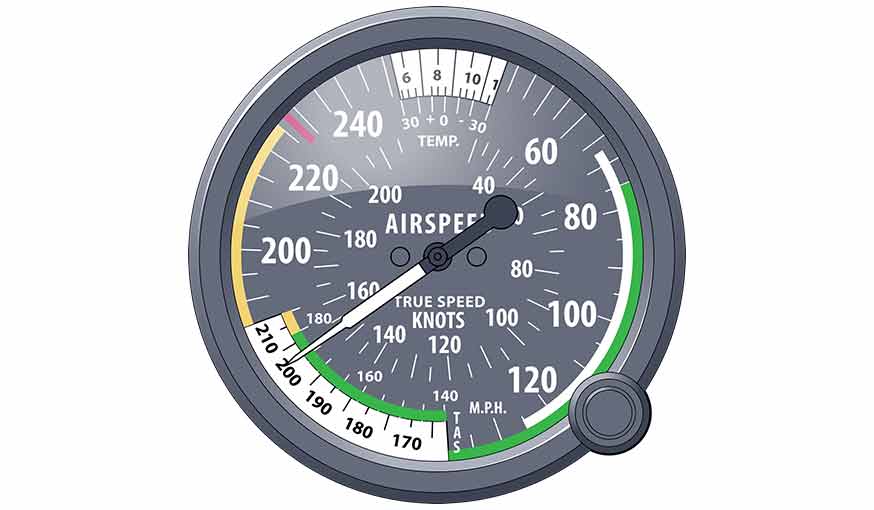
FAA regulations could change at any time. Please refer to current FARs to ensure you are legal. Illustration by Tim Barker
— From the French word vitesse, meaning “speed.”
— Maximum speed in the takeoff at which the pilot must take the first action (e.g., apply brakes, reduce thrust, deploy speedbrakes) to stop the airplane within the accelerate-stop distance. V1 also means the minimum speed in the takeoff, following a failure of the critical engine at VEF, at which the pilot can continue the takeoff and achieve the required height above the surface within the takeoff distance.
— Takeoff safety speed for jets, turboprops or transport-category aircraft. Best climb gradient speed (i.e., best altitude increase per mile with the most critical engine inop). Twin-engine aircraft with an engine inop are guaranteed a 2.4 percent climb gradient (24 feet up per 1,000 feet forward). Minimum speed to be maintained to at least 400 feet agl.
— Minimum takeoff safety speed. Usually 1.2 times the stall speed in takeoff configuration.
IFR Course: Ace Your FAA Written Test

— Design maneuvering speed. The highest safe airspeed for abrupt control deflection or for operation in turbulence or severe gusts. It does not allow for multiple large control inputs. If only one speed is published it is usually determined at max landing weight. This speed decreases as weight decreases. Formula for determining VA at less than max landing weight: VA2 equals VA multiplied by current weight divided by max landing weight.
— Maximum speed for airbrake extension.
— Maximum speed for airbrake operation.
— Missed-approach climb speed for flap configuration with critical engine inop (2.1 percent climb gradient).
— Approach target speed. VREF plus configuration (flaps/slats setting) and wind factor. Typically add (to VREF) half the headwind component plus all the gust factor (to a max of 20 knots).
— Design speed for maximum gust intensity for transport-category aircraft or other aircraft certified under Part 25. Turbulent-air penetration speed that protects the structure in 66 fps gusts.
— Design cruising speed. Speed at which the aircraft was designed to cruise. The completed aircraft may actually cruise slower or faster than VC. It is the highest speed at which the structure must withstand the FAA’s hypothetical “standard 50 fps gust.”
— Design diving speed. The aircraft is designed to be capable of diving to this speed (in very smooth air) and be free of flutter, control reversal or buffeting. Control surfaces have a natural vibration frequency where they begin to “flutter” like a flag in a stiff breeze. If flutter begins, it can become catastrophic in a matter of seconds. It can worsen until the aircraft is destroyed, even if airspeed is reduced as soon as flutter begins.
— Accelerate/stop decision speed for multiengine piston and light multiengine turboprops.
— Demonstrated flight diving speed. VDF is in knots. MDF is a percentage of Mach number. Some aircraft are incapable of reaching VD because of a lack of power or excess drag. When this is the case, the test pilot dives to the maximum speed possible — the demonstrated flight diving speed.
— Speed at which the critical engine is assumed to fail during takeoff (used in certification tests).
— En route climb speed with critical engine inop. Jets accelerate to VENR above 1,500 feet agl.
— Design flap speed. The flaps are designed to be operated at this maximum speed. If the engineers did a good job, the actual flap speed, or VFE, will be the same.
— Maximum speed for undesirable flight characteristics. It must be regarded with the same respect as VNE: redline. Instability could develop beyond the pilot’s ability to recover. VFC is expressed in knots; MFC is expressed in percentage of Mach.
— Maximum flap-extended speed. Top of white arc. The highest speed permissible with wing flaps in a prescribed extended position. Many aircraft allow the use of approach flaps at speeds higher than VFE. Positive load for Normal category airplanes is usually reduced from 3.8 Gs to 2 Gs with the flaps down, and negative load is reduced from minus 1.52 Gs to zero. The purpose of flaps during landing is to enable steeper approaches without increasing the airspeed.
— Flap retract speed. The minimum speed required for flap retraction after takeoff.
— Final segment speed (jet takeoff) with critical engine inop. Accelerate to VFS at 400 feet agl.
— Final takeoff speed. End of the takeoff path. En route configuration. One engine inoperative.
— Best glide speed. This speed decreases as weight decreases.
— Maximum speed in level flight with maximum continuous power. Mainly used for aircraft advertising. Ultralights are limited by Part 103 to a VH of 55 knots.
— Maximum landing gear extended speed. Maximum speed at which an airplane can be safely flown with the landing gear extended.
— Maximum landing light extended speed.
— Maximum landing light operating speed.
— Maximum landing gear operating speed. Maximum speed at which the landing gear can be safely extended or retracted. Usually limited by air loads on the wheel-well doors. On some aircraft, the doors close after extension, allowing acceleration to VLE. In an emergency involving loss of control — when the ground is getting close and the airspeed is quickly approaching redline — forget about this speed. Throw the gear out! As a now famous Flying magazine writer once said, you might lose a gear door, but it’s far better than losing a wing.
— Liftoff speed. Speed at which the aircraft becomes airborne. Back pressure is applied at VR (rotate) — a somewhat lower speed — so that liftoff actually happens at VLOF.
VMCA or VMC
— More commonly known as VMC (although VMCA is more correct). Minimum control speed with the critical engine (usually the left) inoperative out of ground effect in the air — “red line” — and most critical engine inop and windmilling; 5 degrees of bank toward the operative engine; takeoff power on operative engine; gear up; flaps up; and most rearward CG. In this configuration, if airspeed is allowed to diminish below VMC, even full rudder cannot prevent a yaw toward the dead engine. At slower speeds, the slower-moving wing — the one with the failed engine — will stall first. VMC is not a constant; it can be reduced by feathering the prop, moving the CG forward and reducing power.
— Minimum speed necessary to maintain directional control after an engine failure during the takeoff roll while still on the ground. Determined using aerodynamic controls with no reliance on nosewheel steering. Applies to jets, turboprops or transport-category aircraft.
— Maximum operating limit speed for turboprops or jets. VMO is indicated airspeed measured in knots and is mainly a structural limitation that is the effective speed limit at lower altitudes. MMO is a percentage of Mach limited by the change to the aircraft’s handling characteristics as localized airflow approaches the speed of sound, creating shock waves that can alter controllability. As altitude increases, indicated airspeed decreases while Mach remains constant. MMO is the effective speed limit (“barber pole” on the airspeed indicator) at higher altitudes. MMO is usually much higher for swept-wing jets than for straight-wing designs.
— Minimum unstick speed. Slowest speed at which an aircraft can become airborne. Originated as a result of testing for the world’s first jet transport, the de Havilland Comet. During an ill-fated takeoff attempt, the nose was raised so high and prematurely that the resultant drag prevented further acceleration and liftoff. Tests were then established to ensure that future heavy transports could safely take off with the tail touching the ground and maintain this attitude until out of ground effect.
— Never-exceed speed — “red line.” Applies only to piston-powered airplanes. This speed is never more than 90 percent of VDF. G loads imposed by any turbulence can easily overstress an aircraft at this speed.
— “No” go there. Maximum structural cruising speed. Beginning of the yellow arc, or caution range. Theoretically, a brand-new aircraft can withstand the FAA’s 50 fps gust at this speed. Unfortunately, the pilot has no way of measuring gust intensity.
— Rotation speed. Recommended speed to start applying back pressure on the yoke, rotating the nose so, ideally, the aircraft lifts off the ground at VLOF.
— Calculated reference speed for final approach. Final approach speed. Usually 1.3 times VSO or higher. Small airplanes: bottom of white arc plus 30 percent. Jets: calculated from landing-performance charts that consider weight, temperature and field elevation. To this speed jets typically calculate an approach speed (VAP) by adding (to VREF) half the headwind component plus the gust factor (to a max of 20 knots).
— Stall speed or minimum steady flight speed at which the airplane is controllable. VS is a generic term and usually does not correspond to a specific airspeed.
— Stall speed or minimum steady flight speed in a specific configuration. Normally regarded as the “clean” — gear and flaps up — stall speed. Lower limit of the green arc (remember, “stuff in”). However, this is not always the case. It could represent stall speed with flaps in takeoff position or any number of different configurations. So VS1 is a clean stall, but the definition of “clean” could vary.
— Stall speed in landing configuration. Lower limit of white arc. Stalling speed or the minimum steady flight speed at which the airplane is controllable in landing configuration: engines at idle, props in low pitch, usually full wing flaps, cowl flaps closed, CG at maximum forward limit (i.e., most unfavorable CG) and max gross landing weight. Maximum allowable VSO for single-engine aircraft and many light twins is 61 knots (remember, “stuff out”).
— Minimum safe single-engine speed (multi). Provides a reasonable margin against an unintentional stall when making intentional engine cuts during training.
— Takeoff safety speed for Category A rotorcraft.
— Maximum windshield-wiper operating speed.
— Best angle-of-climb speed. Delivers the greatest gain of altitude in the shortest possible horizontal distance. The speed given in the flight manual is good only at sea level, at max gross weight and with flaps in takeoff position. VX increases with altitude (about ½ knot per 1,000 feet) and usually decreases with a reduction of weight. It will take more time to gain altitude at VX because of the slower speed, but the goal is to gain the most altitude in the shortest horizontal distance.
— Best single-engine angle-of-climb speed (multiengine, 12,500 pounds or less).
— Best rate-of-climb speed. Delivers the greatest gain in altitude in the shortest time. Flaps and gear up. Decreases as weight is reduced, and decreases with altitude. Lift-to-drag ratio is usually at its maximum at this speed, so it can also be used as a good ballpark figure for best glide speed or maximum-endurance speed for holding.
READ MORE: VX vs. VY
— Best single-engine rate-of-climb speed — “blue line” — (multiengine, 12,500 pounds or less).
More From Training
Knowing when to call the ntsb, recreating the de havilland tiger moth, scaring yourself into additional dual instruction, navy modernizes training fleet with t-54a delivery, simulated austria is wild, wonderful, always look for a place to land, new to flying, already have an account.
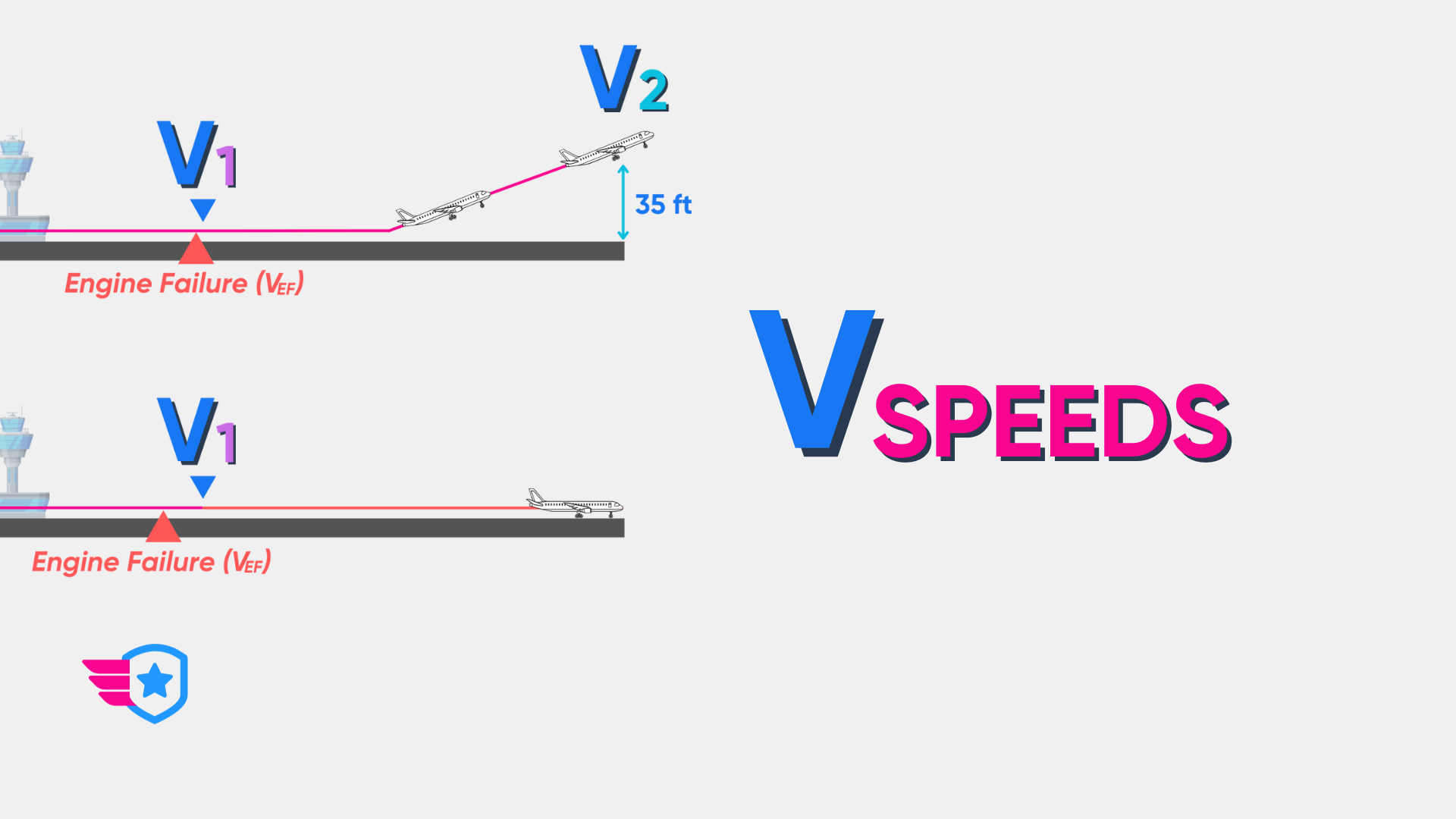
V-Speeds Explained (Vx, Vy, Va, Vs, Vfe, Vmc, Vno, Vne, etc)
What Are V-Speeds?
Mach numbers and v-speeds, v-speeds list, most important v-speeds explained.
- VR: Rotation Speed
- VX: Best Angle of Climb Speed
- VY: Best Rate of Climb Speed
- VA: Maneuvering Speed
- VFE: Maximum Flaps Extended Speed
- VLE: Maximum Landing Gear Extended Speed
- VNE: Never Exceed Speed
- VNO: Maximum Structural Cruising Speed
- VS: Stall Speed
- V1: Takeoff Decision Speed
- V2: Takeoff Safety Speed
- VEF: Critical Engine Failure Speed During Takeoff
- VMC: Minimum Control Speed
Final Thoughts
Ask a pilot how many V-speeds exist, and you’ll get an answer anywhere between “What’s a V-speed?” and “Probably a thousand.”
I’m happy to report that there aren’t a thousand, but there are a few you should be aware of.
In this article, we’ll explain everything you need to know about V-speeds. Plus, we’ve created a handy list so that you never have to Google them again.
V-speeds are specific airspeeds that are defined for operational reasons, such as limitations (e.g., maximum flaps extended speed – V FE ) or performance requirements (e.g., best rate of climb speed – V Y ).
In other words, V-speeds serve as critical benchmarks that guide pilots in managing the aircraft’s performance and ensuring safety.
For example, the rotation speed (V R ) is the speed at which the pilot initiates a gentle rotation of the aircraft to lift off the ground during takeoff.
A V-speed may change depending on factors such as aircraft weight and weather conditions, but its designation (e.g., V R ) remains the same.
You may find several V-speeds on the internet that aren’t listed here. That’s because the V-speeds we’re talking about today are defined in 14 CFR Part 1 , as well as 14 CFR Part 23 and Part 25 (used for aircraft certification).
Any other V-speeds you encounter are likely manufacturer-specific and aren’t regarded as official V-speeds by the Federal Aviation Administration (FAA) .
You may find V-speeds with an “M” instead of the usual “V” (M MO instead of V MO , for example).
This means that the particular speed is defined using a Mach number.
V-speeds can be defined using any type of airspeed , such as knots or miles per hour, but the designation remains “V” unless a Mach number is used – then it becomes “M”.
Let’s take a look at the V-speeds you’re most likely to encounter – and the ones you should know.
As we go through them, use the Pilot’s Operating Handbook (POH) for the airplane you fly, and make a note of the speed for each V-speed. If it isn’t defined in the POH or is variable, make sure you know how to calculate it.
You’ll make your life a whole lot easier if you take the time to memorize them.
V R : Rotation Speed
V R is the speed at which the pilot gently pulls back on the control column to lift the nose off of the runway during takeoff.
For most commercial aircraft, V R varies for each takeoff depending on the weight and configuration of the aircraft as well as environmental factors like weather or runway conditions.
In most General Aviation (GA) aircraft, V R is usually the same regardless of conditions.
It might seem obvious, but V R cannot be less than the stall speed (VS 1 – more on that later).
V X : Best Angle of Climb Speed
V X is the airspeed that provides the best angle of climb. In other words, if you maintain V X , you’ll gain the most altitude in the shortest horizontal distance.
This speed is your go-to for a short-field takeoff, particularly when there are obstacles that you need to climb above during takeoff.
You should practice climbing at V X (and short-field takeoffs) regularly, as it is a critical skill during short-field operations.
V Y : Best Rate of Climb Speed
V Y is the airspeed for best rate of climb. In other words, if you maintain V Y , you’ll gain the most altitude in the shortest amount of time.
Compared to V X , you’ll use more horizontal distance.
V Y is the speed typically used during climb.
V A : Maneuvering Speed
V A is the aircraft’s design maneuvering speed. It is the speed above which you risk damaging the aircraft’s structure if you make a full deflection of a flight control (e.g., full-up elevator).
If you make a full deflection of a flight control at or below V A , the aircraft will stall before the structure is damaged.
You should not use full deflection of any flight control above V A . That being said, repeated full deflection of any flight controls (such as full right rudder and then full left rudder, for example) is not recommended, even below V A .
V A isn’t a fixed figure; it varies with weight. If the aircraft’s weight decreases, V A decreases as well, and vice versa.
V FE : Maximum Flaps Extended Speed
V FE , or maximum flap extended speed, is the highest speed permissible with the flaps extended.
This speed is your boundary marker when flying with flaps down, ensuring you don’t cause potential structural damage.
Not all aircraft treat V FE as a singular speed regardless of flap setting. Most aircraft, like the Cessna 172, have different V FE speeds for different flap settings.
In the Cessna 172, you can fly with 10 degrees of flaps below 110 knots. Anything more than 10 degrees of flaps, and you’re limited to 85 knots instead.
V LE : Maximum Landing Gear Extended Speed
V LE , or maximum landing gear extended speed, is the top speed at which you can safely fly with the landing gear extended.
A related speed is V LO , or maximum landing gear operating speed, the speed above which you cannot extend or retract the landing gear.
V LO is typically lower than V LE due to the aerodynamic forces exerted on the landing gear during extension or retraction.
V NE : Never Exceed Speed
V NE , or “never exceed” speed, is exactly that. The speed above which you should never venture under any circumstances.
V NO : Maximum Structural Cruising Speed
V NO , the maximum structural cruising speed, is the highest speed that you can safely fly in smooth air.
V NO is marked by the upper limit of the green arc on the airspeed indicator .
If you’re above V NO (in the yellow arc or “caution range”) and you encounter air that is not smooth, you could cause damage to the aircraft.
For example, if you encounter turbulence, the “bumps” you experience will increase the load factor. If you fly above V NO in these conditions, the increase in load factor could damage the aircraft’s structure.
V S : Stall Speed
V S represents stall speed, essentially the lowest speed your aircraft can maintain steady flight.
When it comes to V S , there’s an important caveat.
An aircraft can stall at any speed.
A stall occurs when the aircraft exceeds the critical angle of attack. This can happen at any airspeed.
Say a pilot is descending at a high airspeed, far from V S . If they quickly pitch up, the aircraft may exceed the critical angle of attack and stall, despite being at a high airspeed.
So, why do we define V S ?
Well, in a “normal” attitude (think straight-and-level), the aircraft is only at risk of stalling if:
- The pilot makes a dramatic control input that quickly increases the angle of attack, or
- The pilot maintains altitude while the airspeed decreases, gradually increasing the angle of attack and eventually stalling at VS.
So, can the aircraft stall at any airspeed? Yes.
When is it most likely to stall? At V S .
The V-speed for stall speed is divided into two types:
- V S0 – the stall speed in the landing configuration (e.g., flaps and gear down)
- V S1 – the stall speed in a specific configuration (e.g., ‘clean’ – flaps and gear up)
The difference between the stall speed with the flaps down versus the flaps up is significant, so it makes sense to differentiate between the two.
One final note about V S .
Every manufacturer determines the stall speed for their aircraft. The test for stall speed is performed with the throttle closed at maximum takeoff weight.
This means that you may experience a lower stall speed than published in the POH if you’re flying at a lower weight or the throttle isn’t closed.
For more information on stall speed testing regulations, see AC 23-8C , § 23.49, page 15.
V 1 : Takeoff Decision Speed
V 1 , or the takeoff decision speed, is the speed by which the decision to continue the takeoff or abort must be made.
The primary purpose of V 1 is to serve as a decision point. If a critical system fails (such as an engine) or other anomalies occur before reaching V 1 , there will be sufficient runway remaining to abort the takeoff safely.
However, once V 1 is surpassed, the takeoff should continue, as there will not be enough runway left to stop safely.
V 1 is not a fixed number and is calculated before each takeoff, taking into account several factors, including aircraft weight, runway length, environmental conditions, and aircraft performance data.
V 1 is where the pilot must take the first action (such as reducing thrust) to stop the aircraft , or risk a runway overrun.
It’s important to note that V 1 also relates to the aircraft’s performance capability in case of an engine failure. After V 1 , the aircraft must have the performance capability to continue the takeoff on the remaining engines and achieve the required climb performance.
That’s where V 2 , or takeoff safety speed, comes into play.
V 2 : Takeoff Safety Speed
V 2 , known as the takeoff safety speed, is the minimum speed at which the aircraft can maintain a specified rate of climb with one engine inoperative.
The primary goal of V 2 is to ensure a safe climb gradient in an engine failure scenario. This speed ensures that the aircraft can maintain a positive rate of climb to clear obstacles and reach a safer altitude.
The aircraft must be able to achieve V 2 at a minimum of 35 ft above the end of the runway distance after an engine failure at V 1 .
V EF : Critical Engine Failure Speed During Takeoff
V EF is the worst possible speed the critical engine can fail while allowing the takeoff to be completed successfully.
Interestingly, it is not at V 1 , but actually before.
This may sound strange, because we should abort the takeoff if an engine failure occurs before V 1 , right?
Well, regulations state that takeoff performance calculations should account for an engine failure that is close enough to V 1 that the pilot does not have enough time to abort at V 1 .
In other words, if the engine fails right before V 1 without enough time to react, the aircraft must be able to take off safely and achieve V 2 at the specified height and distance.
V MC : Minimum Control Speed
V MC , or minimum control speed, represents the lowest speed at which a multi-engine aircraft can maintain controlled flight with one engine inoperative and the other at full power.
V EF may not be less than V MC , and V 2min may not be less than 1.1 times V MC .
V MC is often divided into two distinct speeds: V MCA and V MCG , each addressing a different aspect of aircraft control under asymmetric thrust conditions.
V MCA : Minimum Control Speed Air
V MCA is the minimum speed at which the aircraft can maintain controlled flight in the air with one engine failed and the other at full power.
Below V MCA , the aircraft may become uncontrollable due to the loss of directional control, making it a critical speed to be aware of during flight operations.
V MCG : Minimum Control Speed Ground
V MCG , on the other hand, is the minimum speed at which the aircraft can maintain directional control on the ground with one engine inoperative and the other at full power.
It’s a vital speed to know during the takeoff roll, ensuring that control can be maintained if an engine fails during takeoff.
V-speeds are critical references that ensure safety and efficiency. They are the result of meticulous calculations and real-world testing, and shouldn’t be disregarded.
You may have even encountered these speeds when flying without knowing it.
One thing’s for sure, you’ll notice them now!
Similar Articles
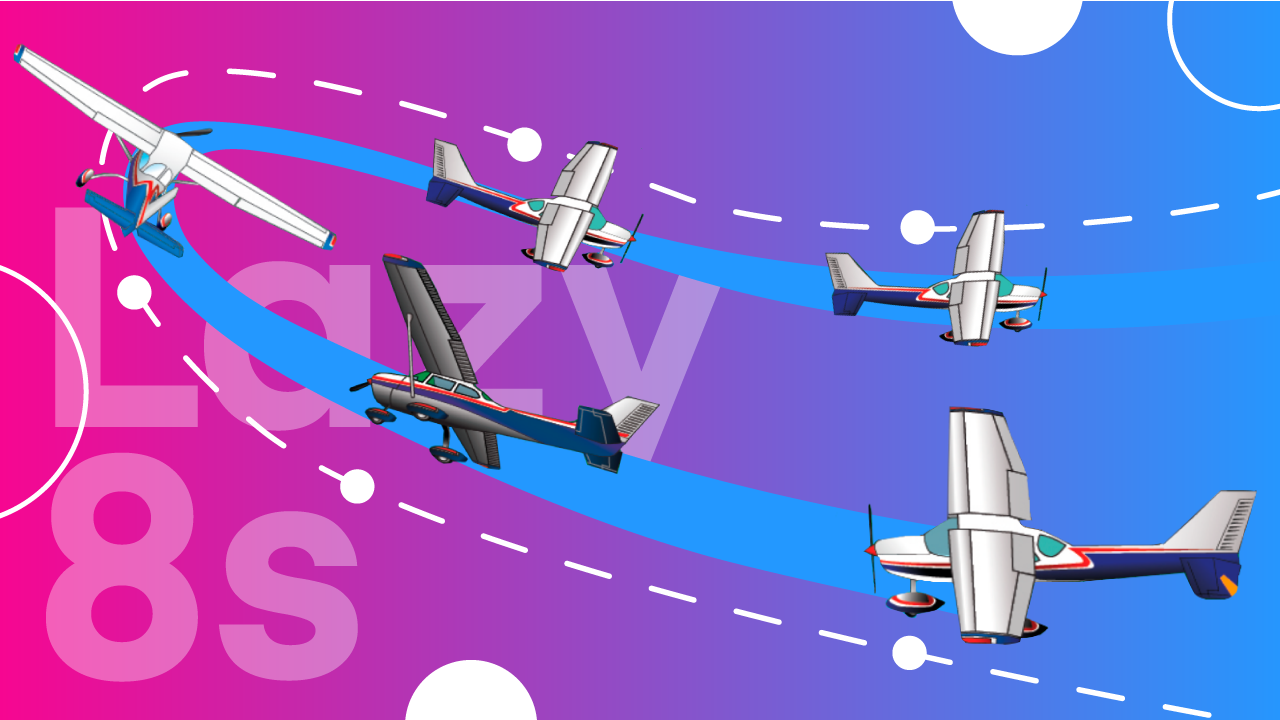
How to Fly Perfect Lazy Eights
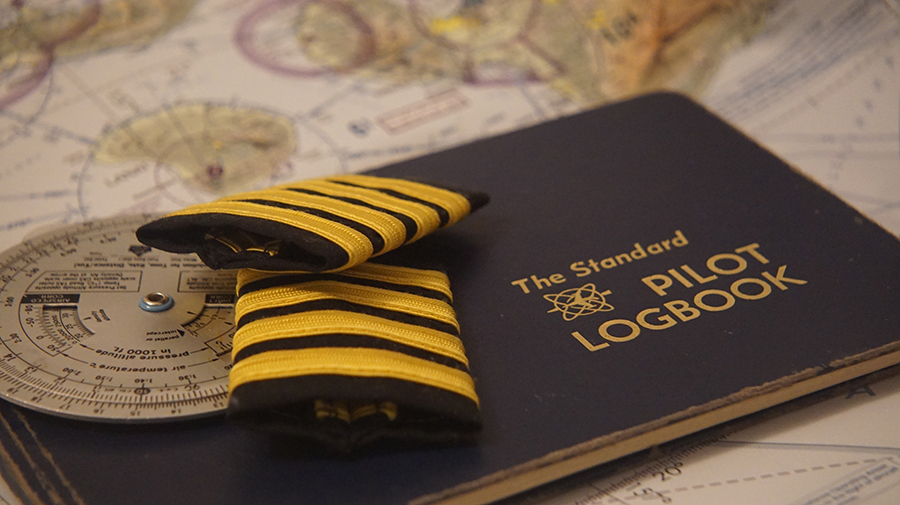
How To Keep Your Pilot Logbook Pristine and Professional

How to Read METAR and TAF Reports

Scored % on their FAA Exam
- Get a Quote
- Charter Guide
- Safety Standards
- Why Charter
- Aircraft Sales
- Aircraft Acquisition
- Private Jet Charter
- Corporate Charters
- Collegiate Athletic Charters
- Performing Arts Charters
- Political Campaign Charters
- Aircraft Management
- Mid Size Jets
- Super Midsize Jets
- Charter Airliner
- Helicopters

A B C D E F G H I J K L M N O P Q R S T U V W X Y Z
Cruise Speed
What is an aircraft’s cruise speed.
An aircraft’s cruise speed is the average speed at which the aircraft travels through the air when it is not actively climbing or descending. Usually this is 85% of its maximum speed. An aircraft usually has the highest rate of fuel consumption when it is at its cruise speed. The average large commercial aircraft usually has a cruise speed of around 575 miles per hour (between 475 and 500 knots).

Passenger airlifted from Carnival Venezia cruise in life-saving rescue
A cruise passenger was airlifted from a Carnival Cruise ship in a life-saving rescue nearly 400 miles off the US eastern coast.
Pararescuemen with the US Air Force's 920th Rescue Wing lifted a passenger, who was in 'critical' condition, from the deck of the 1,000ft Carnival Venezia on May 4.
Dramatic footage shows how two helicopters approached the ship to execute the extraction before the rescuers were hoisted down and immediately began preparing the cruise traveler.
The unnamed patient and his mother were then hauled up into the helicopter, where he received treatment while en route to a hospital in the US. His current condition remains unknown.
The Carnival Venezia had set sail from New York on April 26 on a 10-day cruise to the Bahamas and Caribbean. The rescue team underwent three helicopter air-to-air refuelings before it reached the vessel's remote location in the Atlantic Ocean.
The operation saw the 920th Rescue Wing dispatch a rescue force consisting of two HH-60G Pave Hawk helicopters, two HC-130J Combat King II aircraft and two teams of combat rescue officers and pararescuemen to the cruiseliner.
'Everyone in the wing mobilized with exceptional speed,' Capt. Dylan Gann, 301st Rescue Squadron pilot, recalled of the mission.
'By uniting our efforts, we saved crucial time, delivering life-saving assistance six hours ahead of other response teams.'
When the mission commander arrived on location, the two HC-130J search and rescue planes circled the airspace to assess the situation and assumed on-scene command.
The two HH-60s approached the ship, the pararescuemen were hoisted down and began preparing the passenger and his mother for the rescue. The duo were then lifted up into the helicopter.
Meanwhile, a team at the home station coordinated with flight doctors to find the right treatment facility for the patient.
The information was relayed to the rescue force who then made sure the patient was 'successfully transferred' to the hospital.
'This is what ready now looks like,' Lt. Col. John Lowe, 920th Operations Group commander, said.
'These real-world missions are what our countless hours of training have prepared us for. Rescue was able to plan and execute this mission without hesitation,
'This combined arms team is highly trained in their field while understanding what role they play in the bigger picture and led to the successful completion of the mission.'
Capt. Gann added: 'Our collective determination and efficiency ensured the successful rescue and transport of the individual in need.'
An US Air Force spokesperson said: 'The patient was successfully transferred to a hospital in the United States.
'After 8 hours, and more than 1,200 miles flown, the mission was complete when all of the aircraft returned to Patrick SFB.'
DailyMail.com has approached Carnival Cruises and the 920th Rescue Wing for comment.

A new rule aims to speed up the removal of a limited group of migrants who don't qualify for asylum
A new Biden administration rule aims to speed up asylum processing at the southern border, enabling it to quickly reject a limited group of people believed to have committed serious crimes or who have terrorist links
WASHINGTON -- A new Biden administration rule announced Thursday aims to speed up asylum processing at the southern border for a limited group of people believed to have committed serious crimes or who have terrorist links and ultimately more quickly eject them from the country.
The change comes as the administration has been struggling to demonstrate to voters during an election where immigration is a key issue that it has a handle on the southern border. Republicans have consistently slammed the Biden administration over policies that they say have worsened problems at the southern border.
In a statement announcing the changes, the Department of Homeland Security said migrants who are deemed to pose a public threat are taken into custody but a determination on whether they're eligible for asylum isn't made until later in the asylum process. Under the proposed rule, asylum officers hearing cases at an initial screening stage called credible fear screening — that's intended to happen just days after a person arrives in the country will now be able to consider that criminal history or terrorist links when deciding whether someone should ultimately be removed from the country.
“This will allow DHS to expeditiously remove individuals who pose a threat to the United States much sooner than is currently the case, better safeguarding the security of our border and our country,” the department said in the statement.
Under current law, certain mandatory bars make people ineligible for asylum, for example, if you've been convicted of a particularly serious crime. But those usually come into play when an immigration judge is making a final determination on whether someone gets asylum and that process can take years. Migrants are usually detained during this time, the department said.
When the rule is in place asylum officers can consider evidence of terrorism links for example and use that as a basis for a denial.
The agency gave no figures on how many people would be affected but said it was small.
Republicans immediately criticized the changes as too little. In a statement, House Committee on Homeland Security Chairman Mark E. Green, a Republican from Tennessee called it an “unserious, politically motivated attempt to address a significant problem the Biden administration itself created.”
Separately from the rule announced Thursday, the administration is weighing larger executive action to crack down on immigration at the border. But the timing on when that might be announced depends in large part on whether the number of illegal border crossings increases. After hitting a record high in December, they have decreased in recent months in large part due to Mexican government enforcement.
Under U.S. and international law, anyone who comes to the U.S. can ask for asylum. People from all over the world travel to the U.S-Mexico border to seek that protection. To be granted asylum they must prove persecution or fear of persecution on account of race, religion, nationality, membership in a particular social group, or political opinion.
It's a high bar and the majority of people who apply for asylum ultimately don't qualify. But the process can take years in overloaded immigration courts.
Critics have questioned whether the asylum system should be fundamentally changed to make it more restrictive while others say the U.S. has a moral obligation to protect people fleeing for their lives.
Last year the administration announced another rule aimed at restricting the asylum process but in much more expansive ways than the one announced Thursday. That rule made it extremely difficult for migrants who come directly to the southern border to get asylum unless they use a government app to make an appointment or they have already tried to seek protection in a country they passed through on their way to the U.S.
Opponents said it’s essentially a rehash of similar efforts by former President Donald Trump and sued. The Biden administration says there are substantial differences between their rule and what Trump tried. That Biden rule is still in place while the issue plays out in court.
Generally, immigration advocates have been hesitant of any steps that would seek to make the initial, credible fear screening harder. They say that migrants are often doing these interviews immediately after surviving life-threatening perilous trips to the U.S. and that these initial credible fear screenings are designed to have a lower bar than final asylum determinations so that people aren't wrongfully removed.
Gregory Chen, the director of government relations for the American Immigration Lawyers Association, said the rules barring people with criminal or terrorist backgrounds from asylum are important to protect the country. But his concern is that these changes will speed up what is already a “highly complex” legal analysis.
“At that early stage, few asylum seekers will have the opportunity to seek legal counsel or time to understand the consequences,” he said. “Under the current process they have more time to seek legal advice, to prepare their case, and to appeal it or seek an exemption.”
The new rule goes into effect after a 30-day comment period.
Top Stories

Woman uses self-checkout to steal $60,000 of items from same Target store over a year
- May 10, 5:03 AM

Here are the most popular baby names of 2023
- May 10, 2:02 PM

Smoke from Canadian wildfires reaches US, Minnesota under air quality alert
- 3 hours ago

Controversy follows Gov. Kristi Noem as she is banned by two more South Dakota tribes
- May 11, 6:02 PM

Search ends for suspect in fatal 'ambush' of police officer
- 2 hours ago
ABC News Live
24/7 coverage of breaking news and live events

IMAGES
VIDEO
COMMENTS
The typical cruising altitude for commercial airliners is 31,000 to 38,000 feet (9,400 to 11,600 m; 5.9 to 7.2 mi). [better source needed] The speed which covers the greatest distance for a given amount of fuel is known as the maximum range speed. This is the speed at which drag is minimised. For jet aircraft, "long-range cruise" speed (LRC) is ...
How Fast Planes Cruise At. The usual cruising speed for a commercial airplane is between 880-926 km/h or 547-575 mph. Most airplanes fly slower than the maximum speed they are capable of while at cruising altitude to conserve fuel. How Fast Planes Land. Most commercial airliners land with a speed of between 240 and 265 km/h or 150 to 165 mph.
Of these aircraft, only the Boeing 777 family had an average cruising speed in excess of 500 knots, with its speed of 518 knots translating to roughly 960 kilometers per hour. Get notified via ...
The Diamond DA40 is, without a doubt, a faster aircraft than the 172, with an initial cruise speed of 145 knots when it came out in 1997. The most up-to-date variant - the DA40 NG - is powered by a 168 hp Austro Engine AE300, which offers a cruise speed of 154 knots, as well as a higher service ceiling of 16,000ft. Beechcraft Musketeer
Cruising. For most commercial airliners, the airplane's cruising speed ranges between 550 and 600 mph (478 to 521 knots). Landing. While landing, speed is largely affected by the aircrafts ...
There are several factors that determine how the aircraft's cruise speed is set. Most jetliners cruise in the range of 475 to 550 knots (800 - 900 km/hr). Pilots must think from the performance standpoint when configuring the aircraft for flight, and identifying the optimum cruise speed based on different parameters.
Specifically, the cruising speed of commercial airliners is typically around 550-600 mph, or Mach 0.85. Takeoff and landing speeds are much slower, typically between 130-180 mph, depending on the aircraft and weather conditions. The landing speed of a commercial airliner can be around 160-180 mph, while the takeoff speed can be around 130-160 mph.
Changing cruise speed is indeed one of the degrees of freedom to change lift, but not the best one. In the aircraft aerodynamic axes, lift L is given as. L = CL ⋅ 1 2 ⋅ ρ ⋅V2 ⋅ S L = C L ⋅ 1 2 ⋅ ρ ⋅ V 2 ⋅ S. S is wing area, usually a constant that cannot be changed during cruise. So the degrees of freedom to change lift are:
Understanding the Cruise Speed of Common Aircraft. On average, the typical cruising speed of a large commercial aircraft, like a Boeing 747, is somewhere between 475 and 500 knots (roughly 575 mph). So what is the cruising speed of a 747? Depending on passenger load, the average 747 cruising speed is 490 nautical miles or Mach 0.85.
Pilots are required to maintain their speed to within .01 accuracy of their Mach number. Air Canada's narrow-body fleet cruises at Mach .74 to .80. The wide-body fleet zips through the air at Mach .80 to Mach .88. The Boeing 787, Air Canada's fastest plane, is capable of Mach .90 (90% the speed of sound) but we fly it from Mach .84 to ...
The most common of aircraft, such as the Airbus A320 and Boeing 737, mainly cruise at a comfortable 830 kilometers (515) miles per hour, or if you compare it to the Airbus A350 or Boeing 787, it can reach a slightly higher speed of 900 kilometers (559 miles) per hour. The typical cruising altitude for most commercial flights sits between 31,000 ...
In this video, we go over how to calculate cruise performance of an aircraft using the graphical and chart methods. To do this on your own aircraft, you wil...
One of the more useful tables is the Cruise Performance table shown below (Figure 1). The chart gives the fuel flow rate and true airspeed for various combinations of pressure altitude, temperature, and engine percent power. Unfortunately, the table only provides data at the max gross weight of 2300 lbs. Furthermore, my aircraft recently had an ...
The aircraft maintains a constant airspeed called the cruise velocity. Relative Velocity. If we take into account the relative velocity of the wind, we can determine the ground speed of a cruising aircraft. The ground speed is equal to the airspeed plus the wind speed using vector addition. The motion of the aircraft is a pure translation.
They will then climb at a maximum speed of 250kts/290mph while under 10,000 feet and then can speed up to 280-300kts/320-345mph for the rest of the climb. Cruise speeds of most passenger jets are around 600kts/700mph. To find out all about the different speeds an airplane flies at please read on….
Better still, though, the airplane's cruise climb performance is excellent. The recommended high-speed climb is 145 knots, but in delivering a dozen or so 700s around the world over 20 years, I've used 160 to 170 knots and still seen an easy 1,200 fpm.
These characteristics allow the aircraft to achieve a maximum cruise speed of 560 knots (645 miles per hour) at 35,000 feet above sea level. At this speed, the airliner can cover vast distances efficiently, reducing travel time for passengers. Other Aircraft Performance Terms you can Explore.
If you want to figure out the cruise climb speed for your airplane, and you don't have a published speed, a good rule-of-thumb is to find the difference between Vx and Vy, and add that number to Vy. For example, a POH for the Piper Warrior III has a Vy of 79 knots and a Vx of 63 knots. Add the difference of 16 knots to Vy, and you can estimate ...
An airplane's "speed ratio" compares its maximum airspeed in level flight to its flaps-down stall speed (V SO). The wider the margin, the more versatile the airplane. ... A 180-horsepower Cessna 172S cruising at 75-percent power (135 horsepower) is 124 knots—or 0.92 knots per horsepower. A normally aspirated 300-horsepower Cirrus SR22 ...
Speed at which the aircraft was designed to cruise. The completed aircraft may actually cruise slower or faster than VC. It is the highest speed at which the structure must withstand the FAA's ...
Never-exceed speed. V NO: Maximum structural cruising speed. V R: Rotation speed. V REF: Reference landing speed. V S: Stalling speed or minimum steady flight speed at which the airplane is controllable. V S0: Stall speed in the landing configuration. V S1: Stall speed in a specific configuration (e.g., 'clean' configuration). V SR ...
An aircraft's cruise speed is the average speed at which the aircraft travels through the air when it is not actively climbing or descending. Usually this is 85% of its maximum speed. An aircraft usually has the highest rate of fuel consumption when it is at its cruise speed. The average large commercial aircraft usually has a cruise speed of ...
Design cruise, also known as the optimum cruise speed, is the most efficient speed in terms of distance, speed and fuel usage. V cef: See V 1 ... Zero rate of climb speed. The aircraft is at sufficiently low speed on the "back of the drag curve" that it cannot climb, accelerate, or turn, ...
The Pivotal Helix is a single-seat eVTOL with a 20 mile range and a 55 knot (63 mph) cruise speed. It also has a fascinating design, being a tilt aircraft where the fuselage tilts but the rotors ...
A cruise passenger was airlifted from a Carnival Cruise ship in a life-saving rescue nearly 400 miles off the US eastern coast. Pararescuemen with the US Air Force's 920th Rescue Wing lifted a ...
But his concern is that these changes will speed up what is already a "highly complex" legal analysis. ... Mom speaks out after Air Force rescued son from cruise ship. May 9, 7:36 AM. Trump ...